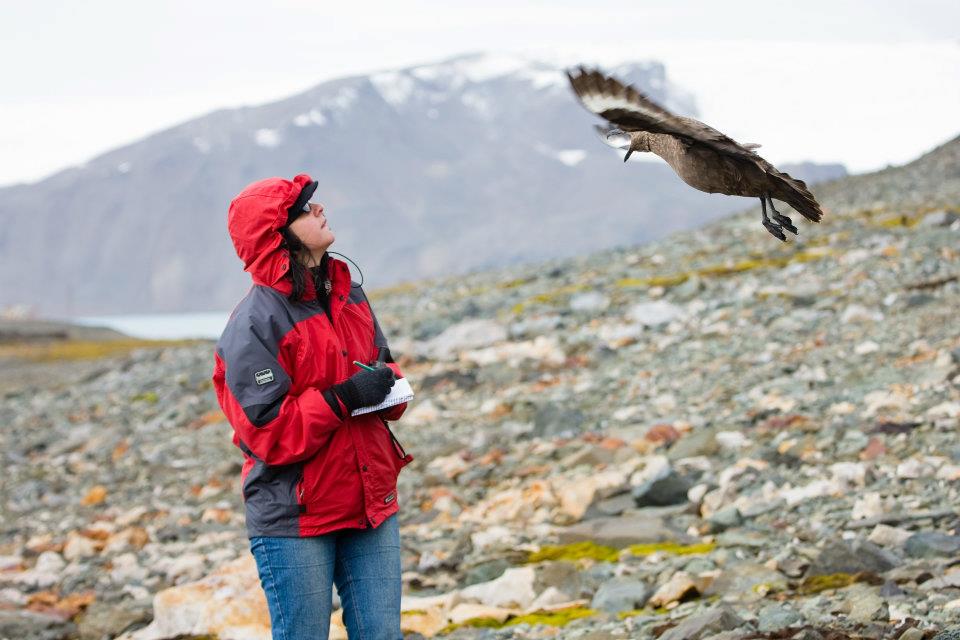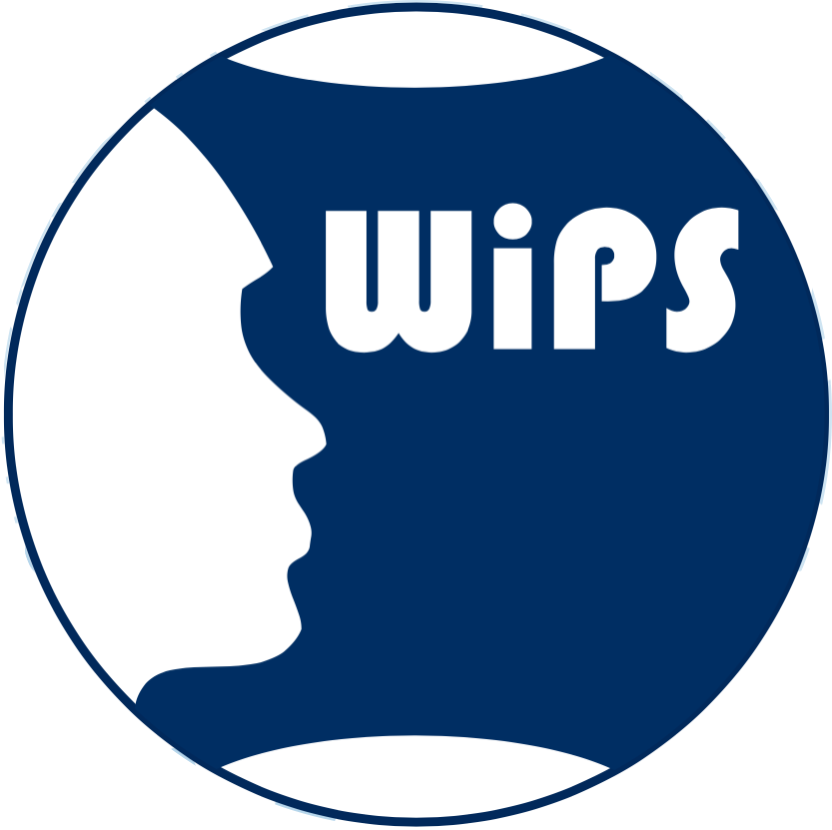Meet 100 Women in Polar Science and Support! (52-100)
1-year anniversary:
Message of support from
Renuka Badhe, PhD
Executive Director, European Polar Board (EPB)
Today, the day that the Antarctic Treaty was signed in 1959, is also the 1-year anniversary, and the 100th polar woman we have featured through the #100PolarWomen project! Women in Polar Science, founded nearly 8 years ago, has gone from strength to strength over the years.
Everyone has a story of our own, and challenges that are unique to our story and our life. To make the polar world a truly more equitable place, we need to understand these stories and these challenges, so we can provide the best possible space for everyone to shine! Through the Women in Polar Science network, we are happy to share with the world the amazing diversity of polar researchers in the world and showcase all of the different stories. One day we will share your story too – come join in our celebration!
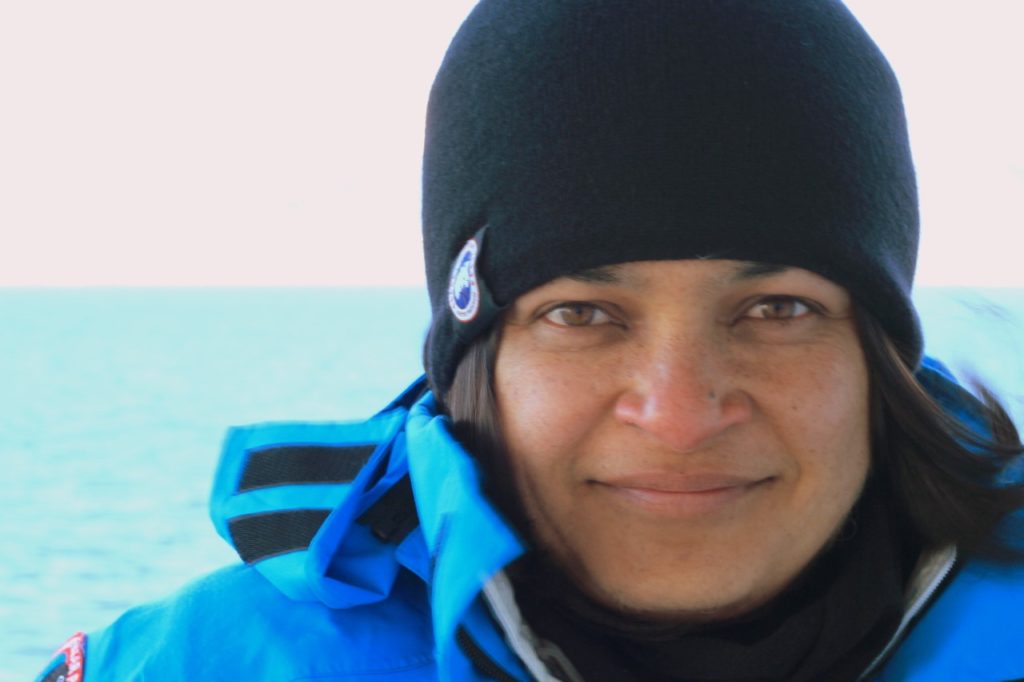
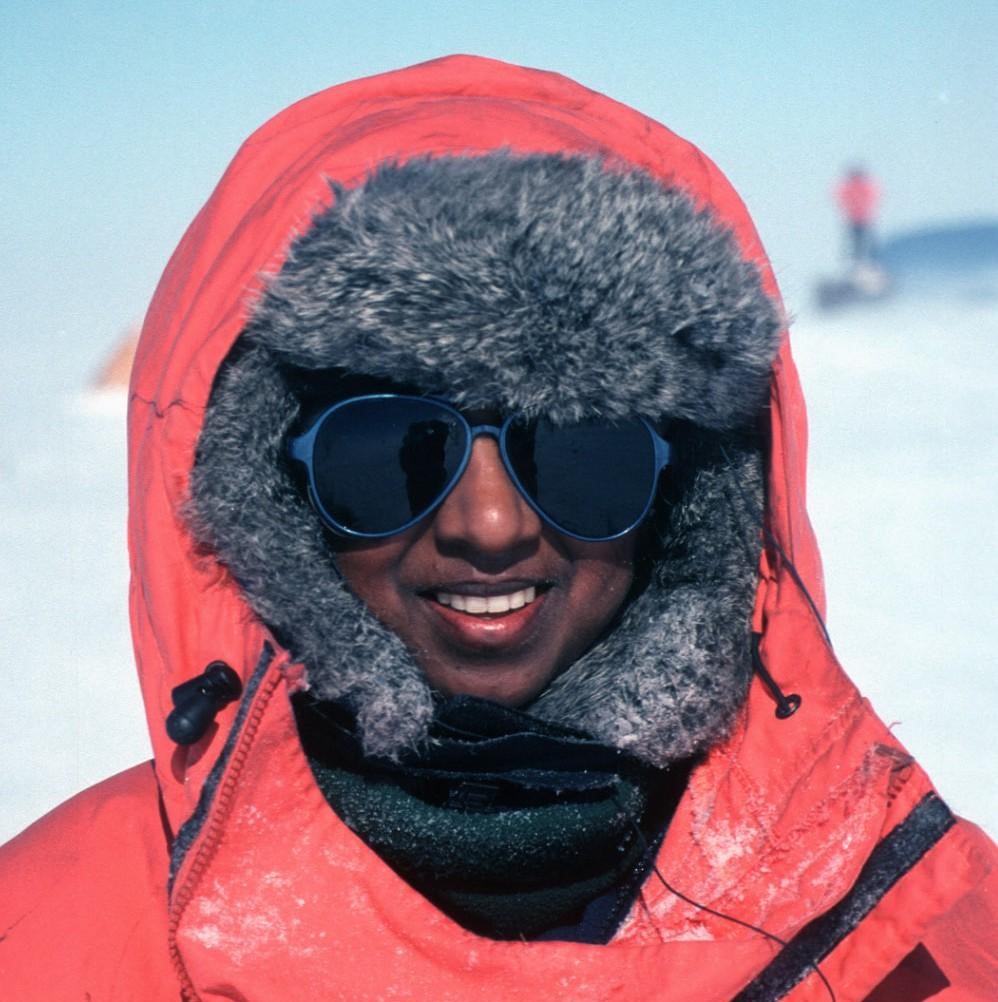
1-year anniversary:
Message of support from
Chandrika Nath, PhD
Executive Director, Scientific Committee on Antarctic Research (SCAR)
My first encounter with polar research was back in the early 1990s. Back then I’d have been hard pushed to populate a list of 10 polar women, let alone 100! It’s great to see how far the field has come since then and I am humbled by the passion, talent and deep commitment showcased on these pages. Thanks to #100PolarWomen for giving us the opportunity to celebrate these women and their achievements. Women and marginalised communities are most affected by climate change and it’s vitally important that they are also involved in efforts to understand our climate. Pushing back the frontiers of polar research is a key part of that.
1-year anniversary:
Message of support from
Michelle Rogan-Finnemore
Executive Secretary, Council of Managers of National Antarctic Programs (COMNAP)
#100PolarWomen has provided much-needed visibility to the remarkable depth and breadth of leadership that women bring to polar activities. One hundred years ago, the number of women involved in Antarctic activity would have been counted on one hand. Now, #100PolarWomen focuses the lens on just a few of the many women involved in polar activities today and highlights the significant contributions they are making. #100PolarWomen provides a snapshot of the positive changes we are seeing to the demographics of polar activity. Congratulations to the team at Women in Polar Science for this project and for giving greater visibility to an underrepresented and important group.
Let’s add a 0…then, add another one. And, while we are at it, three 0s make a nice target. #100PolarWomen, could and should be #100000PolarWomen. We all can play a part in this positive change.
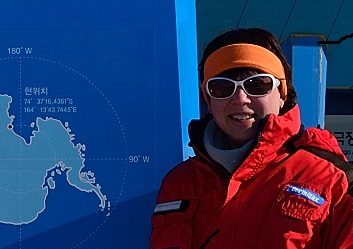
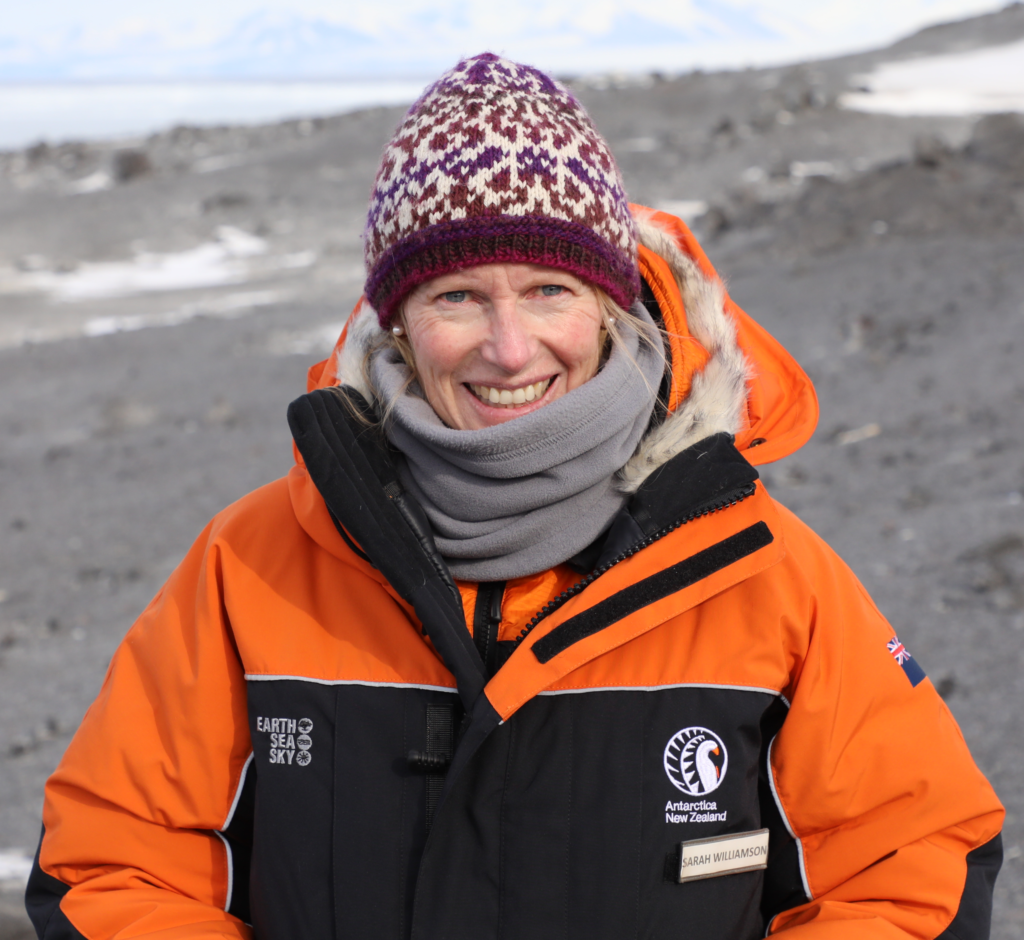
1-year anniversary:
Message of support from
Sarah Williamson
Chief Executive Officer, Antarctica New Zealand
The New Zealand Antarctic Programme first employed a woman at Scott base in the season of 1969/70. Pamela Young was a research assistant studying Adelie penguins at Cape Bird. She was also one of the first women to set foot at the South Pole in November 1969. I love that story. Six women all linked arms and walked down the tailgate of the plane – united, they claimed the title of first women at the Pole. Ever since, women have collaborated to get the best out of Antarctica and are now integral to scientific endeavour, logistics achievements and leadership at Antarctica New Zealand. Happy anniversary to the #100polarwomen project and congratulations on your excellent work.
Johanna Grabow, PhD
Discipline: Science and policy advice
Age: 32
Nationality: Germany
Organisation: Scientific Committee on Antarctic Research (SCAR)
Regional focus: Antarctic
Social media: Twitter and LinkedIn
What’s the work that you do?
I am the Project Officer of the Scientific Committee on Antarctic Research (SCAR). In this role, I support SCAR’s mission to initiate, develop and coordinate high quality international scientific research in the Antarctic region. My role includes managing the internal and external communications of SCAR, as well as promoting our various activities within and beyond the science community. You’ll probably come across my name if you’re attending one of our biennial Open Science Conferences. I also serve as the Assistant Editor of the Antarctic Environments Portal – a fantastic resource linking Antarctic science and policy.
What keeps you going?
The community! I was first introduced to the polar community during my PhD. My journey to the Antarctic began on the page – my academic background is in the humanities – and I wrote my dissertation on the representation of Antarctica in contemporary British novels. During this time, I was fascinated by the welcoming, interdisciplinary and helpful polar world. Now I am lucky enough to be an active part of this community, support it, collaborate with our partners and stakeholders and highlight the importance of Antarctica in our Earth system with the wider world.
What’s your message to the world?
Antarctica is the continent for ground-breaking scientific discoveries, but also the continent for big emotions and quiet reflections. It asks us to rethink our relationship with our natural surroundings. How do we act in such an environment – and, more importantly, how do we treat it, how do we destroy it and how do we protect it? It is a place of learning, about ourselves, about the people surrounding us and about the planet we inhabit. Never stop asking and learning from it.
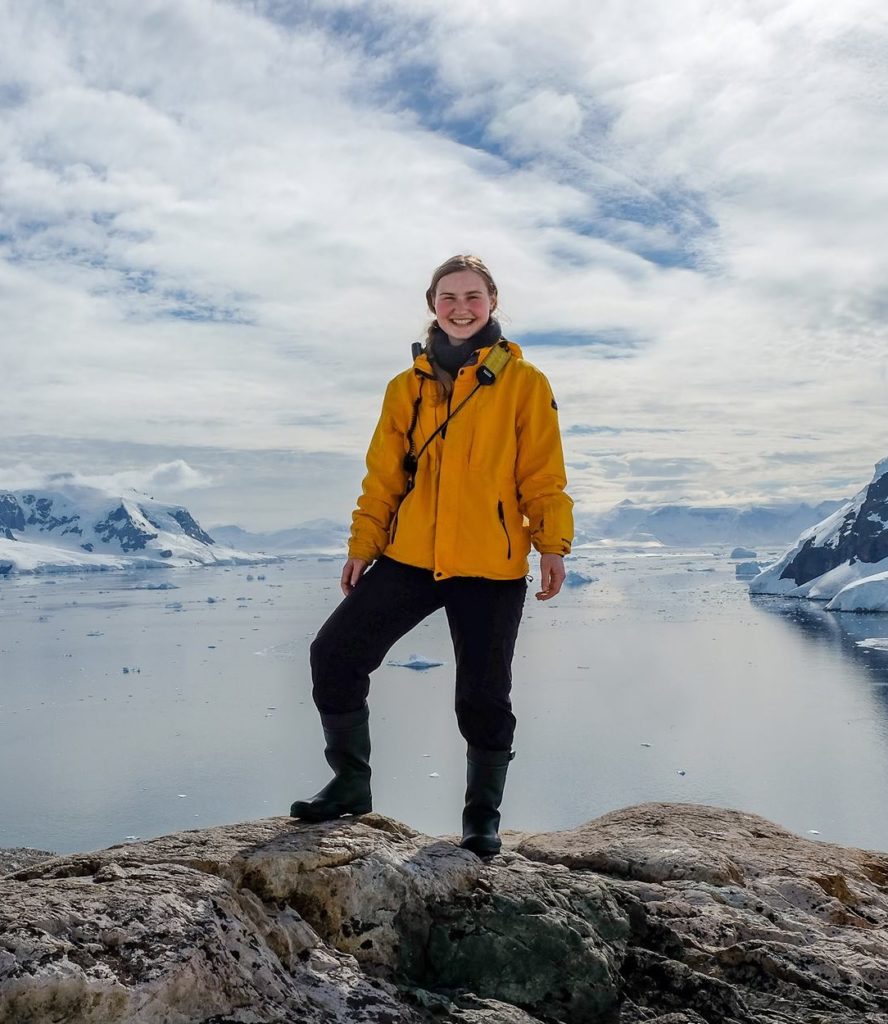
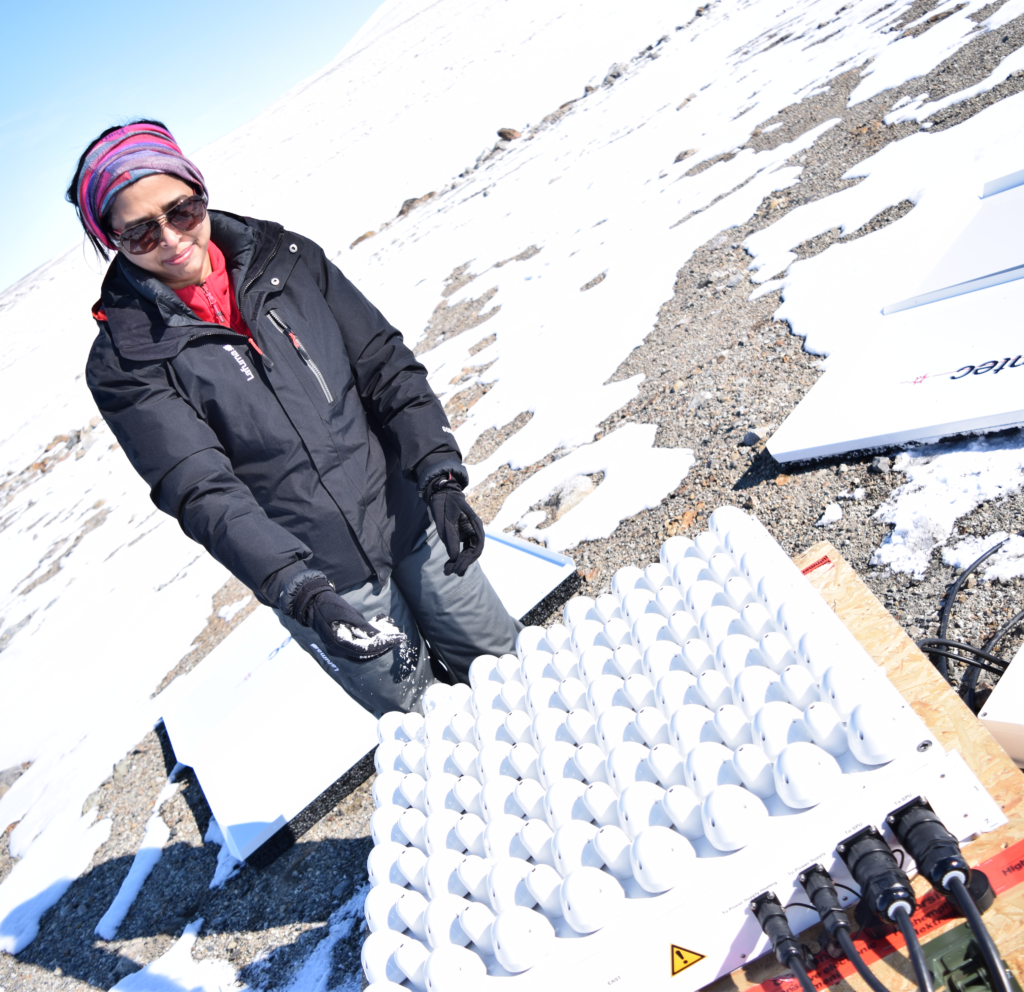
Sheeba Chenoli, PhD
Discipline: Atmospheric Sciences
Nationality: India
Organisation: Dept of Geography/National Antarctic Research Center, University Malaya (Malaysia)
Regional focus: Antarctic
Social media: Facebook and Twitter
What’s the work that you do?
I am a senior lecturer in meteorology and climatology in the Department of Geography, Faculty of Arts and Social Sciences at the University of Malaya and an associate at the National Antarctic Research Centre at the same university. I have carried out research on the severe wind in Antarctica, Antarctic precipitation, teleconnections between the Antarctic and tropical latitudes and Antarctic climate change. I have participated twice in the annual Antarctic expedition to Scott Base, organised by the Malaysian Antarctic Research Program (MARP) in collaboration with the New Zealand Antarctic Program, in 2007 and 2008. I also participated in a field trip to Jang Bogo station in Antarctica, where I helped to install the Doppler Sodar, a wind profiler, during the 2016 field season. I received the Asian Polar Science Fellowship from the Korean Polar Research Institute (KOPRI) in 2015. Also, I chair an action group on Tropical and Antarctic Teleconnections (TATE) under the Scientific Committee on Antarctic Research (SCAR). Currently I’m one of SCAR’s National Representatives in the Physical Sciences Group. Finally, I am part of the team behind Bite-Size Climate Action, a series of fun, flexible, and immersive short online modules designed by experts in the conservation field to inspire Malaysian youth to act for the climate.
What keeps you going?
In my university teaching, I get to witness young people beginning to understand climate science. I see their awareness of our climate crisis increasing, and I get to guide them as they choose their future careers.
What’s your message to the world?
I love this quote: You cannot adapt to extinction, act now and act for our climate!
Carla Ubaldi, MSc
Discipline: Environmental Management
Age: 58
Nationality: Italy
Organisation: National Antarctic Research Program (PNRA), Italy
Regional focus: Antarctic
Social media: Facebook and Instagram
What’s the work that you do?
I have been working as an environmental chemist for 25 years, studying occurrence and fate of persistent organic pollutants. Five years ago I started working as an environmental advisor for the Italian Program of Research in Antarctica. My main focus is the protection of the Antarctic environment, helping scientists and logistics to behave in the right way. At Mario Zucchelli Station, I have other tasks as well, such as taking samples for our monitoring program, checking the quality of fuel, and managing the laboratories.
What keeps you going?
I love Antarctica, the quiet environment and the serene landscape. I think my job is useful. I also like meeting new people every year, and every year I learn something new. I have been very lucky to have had this opportunity.
What’s your message to the world?
Our planet is in danger, the environment is suffering both in Antarctica and at home. Everyone must do everything possible to protect the environment, Everyone’s contribution is important.
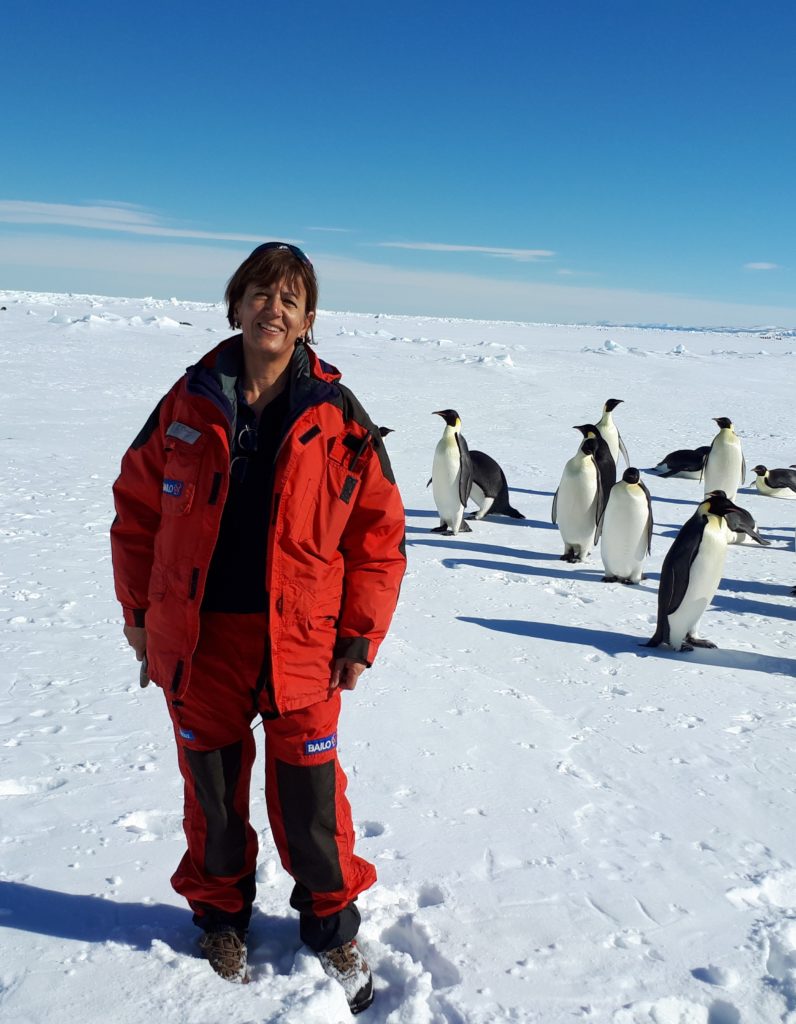
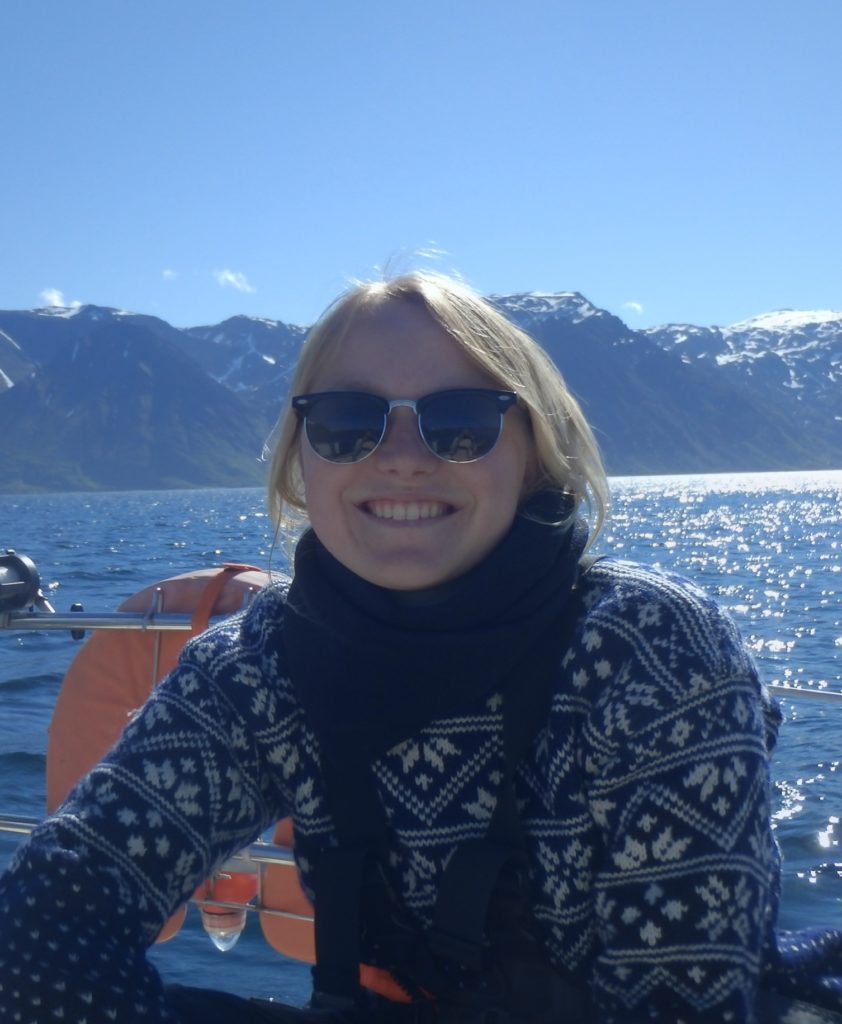
Eva Bendix Nielsen
Discipline: Climatology
Age: 27
Nationality: Denmark
Organisation: University of Canterbury (New Zealand)
Regional focus: Antarctic
Social media: LinkedIn
What’s the work that you do?
I am a PhD student in the Atmospheric Research Group at the University of Canterbury, New Zealand, focusing on climate variability in the Ross Sea Region, Antarctica. I am interested in mesoscale temperature variations, extreme air temperatures, and the processes driving these events. My work is multidisciplinary and covers topics in meteorology, climatology, remote sensing, and modelling. Part of my PhD is running a fieldwork campaign in the McMurdo Dry Valleys collecting infrared scans of soil and glacier surfaces.
What keeps you going?
The polar regions have always fascinated me and I feel very grateful for having the opportunity to study them on close hold. I love that my work involves time in the field and being able to collect data not only for my research but for others as well. Being part of a team, helping each other, and working towards a common goal is a major driver in all that I do. Through my research, I have had the pleasure of meeting experienced people in the polar community, and hearing their stories inspires me to keep going.
What’s your message to the world?
I believe that enjoying what you do, being open, kind and collaborative will lead to great research.
Marie Heist
Discipline: Project Management and Program Support
Age: 36
Nationality: USA and New Zealand
Organisation: Antarctica New Zealand
Regional focus: Arctic and Antarctic
Social media: LinkedIn and Website
What’s the work that you do?
I am currently working as an Assistant Project Manager for the Scott Base Redevelopment project with Antarctica New Zealand. This is a complex construction project that is aiming to build a new Antarctic research station for New Zealand. I have been interested in the polar regions since I was a young child and starting in 2010 I have worked with the US Arctic and Antarctic Programs in a wide variety of roles from General Assistant shoveling snow to Heavy Equipment Operator running tractors on traverse, from Science Technician repairing instruments to Station Manager overseeing station operations.
What keeps you going?
Antarctica in particular feels like one of the last frontiers. It is hostile, remote, and beautiful. I love the unique challenges we face operating in the polar regions. Everything is just a little more complicated and a little more difficult and you are constantly having to come up with creative solutions.
What’s your message to the world?
Keep exploring and stay interested in what you are doing!
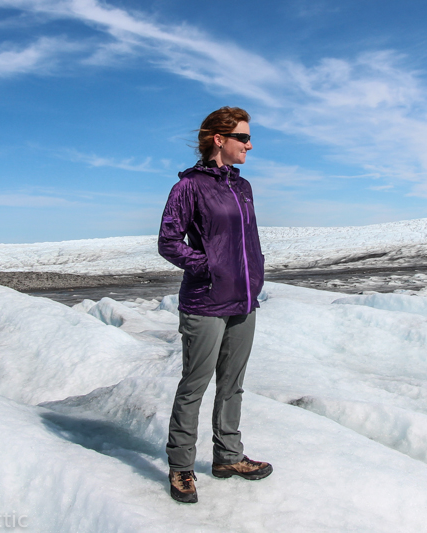
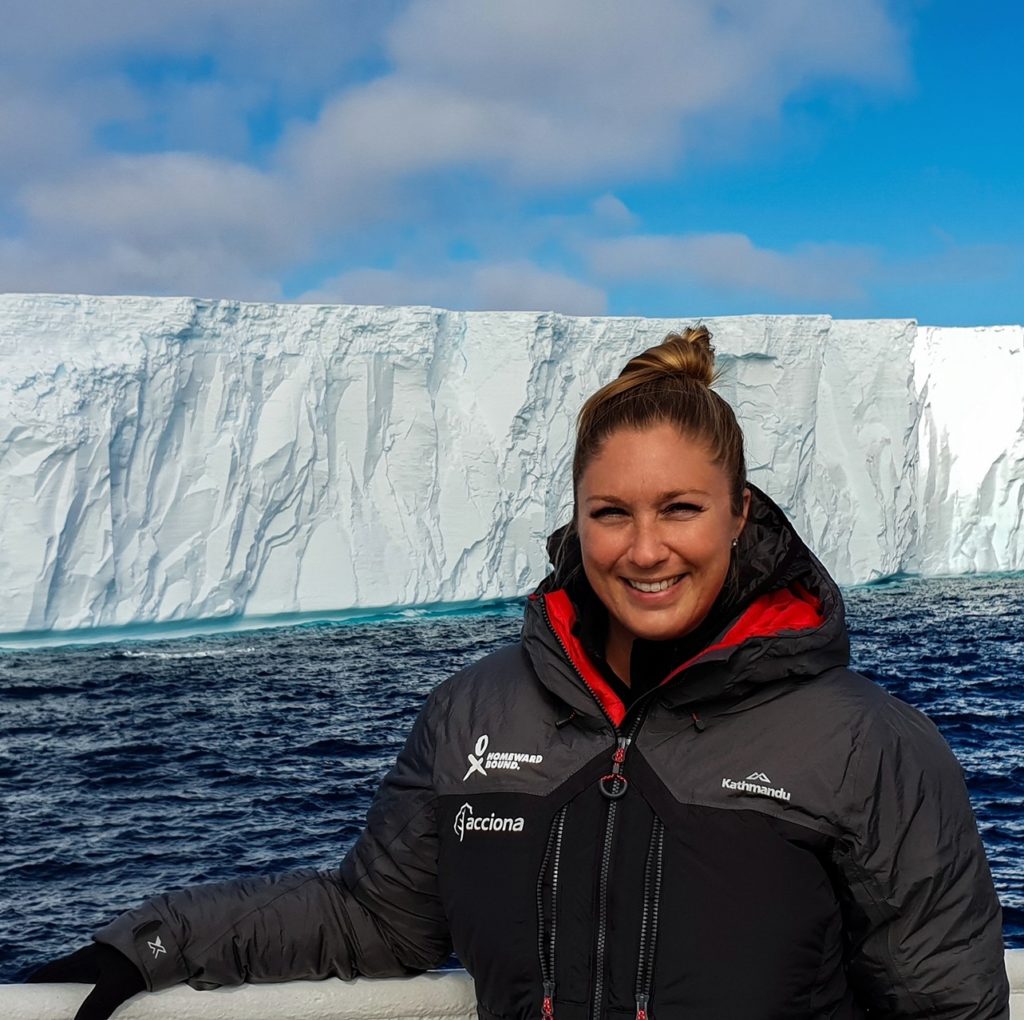
Steph Gardner, PhD
Discipline: Marine microbial ecology
Age: 34
Nationality: Australia
Organisation: The University of Sydney (Australia)
Regional focus: Antarctica
Social media: Twitter and LinkedIn
What’s the work that you do?
My research spans tropical and temperate reef ecosystems, with a range of organisms such as corals, algae and fish gastrointestinal tracts, with the common theme of marine microbial ecology. My research as a microbial ecologist involves looking at bacteria to understand their role in health and function under a changing climate. I’m working in the Securing Antarctica’s Environmental Future (SAEF) program, an Antarctic research program, funded by the Australian Research Council. SAEF’s aims are to understand the changes taking place across the Antarctic region – to its climate and its biodiversity – and develop innovative ways to forecast, mitigate and manage these changes. My role is to characterise the microbial diversity in Antarctica.
What keeps you going?
I’m so grateful that I can honestly say I love my work! I’ve been so fortunate to have travelled extensively for work across tropical, temperate and polar regions. But in my short career, I’ve already seen declining environmental conditions impacting vulnerable ecosystems, and I’m driven to study and understand these so we are better equipped to protect them. I love working in a diverse team with people from different backgrounds, career stages, expertise, and find it really fulfilling working together towards a common goal.
What’s your message to the world?
My ultimate personal and professional dream is to raise awareness for and diagnose the problems facing our natural world in order to safeguard these vulnerable ecosystems so that future generations can enjoy them as we’ve been so fortunate to. I encourage you to stay curious, ask questions, be involved, do your own research, and just say yes to opportunities as they arise – you never know where they may lead you – that’s how I’ve ended up going to Antarctica!
Faradina Merican, PhD
Discipline: Phycology, Environmental Science
Age: 42
Nationality: Malaysia
Organisation: Universiti Sains Malaysia (Malaysia)
Regional focus: Antarctica
Social media: ResearchGate
What’s the work that you do?
I am a specialist microalgal taxonomist and ecologist. I am very interested in cyanobacteria and microalgae taxonomy, ecology, phylogeny and toxicity. I am working towards understanding the responses and adaptations of cyanobacteria and microalgae to environmental change drivers in Antarctica.
What keeps you going?
The science and the surprises! The more I study microalgae, the more fascinating they become. Antarctica was my first destination away from home and the best field work by far. The continent is magical, not only because of the science, but also because of the way we are all united to achieve a common goal: to protect it!
What’s your message to the world?
Alone we are a drop, together we are an ocean. Together we can bring about change.
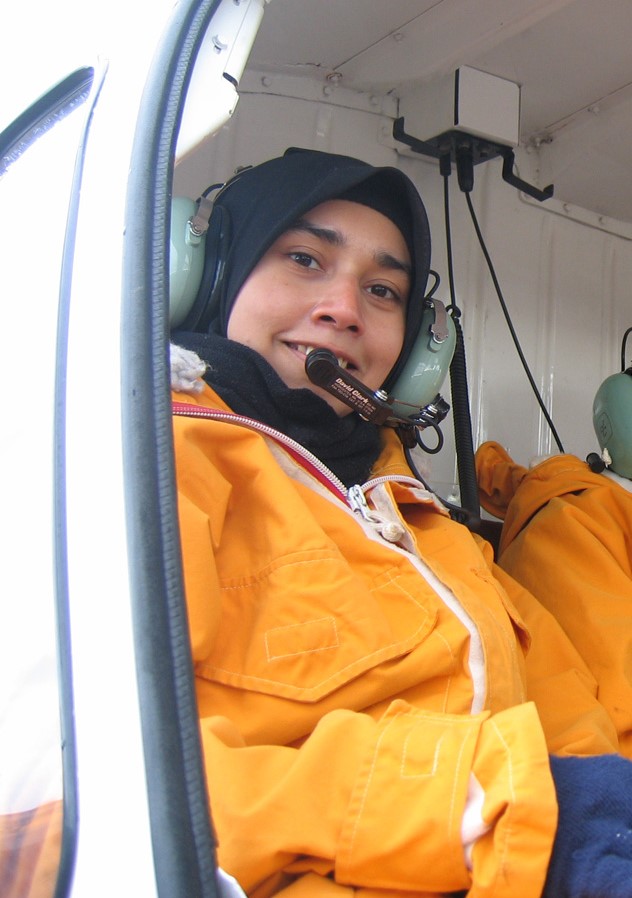

Armina Soleymani, PhD
Discipline: Sea ice remote sensing
Age: 31
Nationality: Iran
Organisation: University of Waterloo (Canada)
Regional focus: Arctic
Social media: ResearchGate
What’s the work that you do?
My PhD research focuses on estimating sea ice concentration and sea ice edge using passive microwave retrieval algorithms over the Arctic. My main interest is to analyze the performance of such sea ice algorithms and develop a method to adjust the bias associated with them to obtain more-accurate sea ice data before their use in sea ice-related tasks.
What keeps you going?
My passion for sea ice in polar regions motivates me to work and promote my perspective on Arctic and environmental systems, improve the quality of my research, and build my career network. Developing my knowledge of new ideas and research methods, and subsequently implementing them in vulnerable regions under certain circumstances, is a key component of my goal. I have greatly enjoyed my doctorate research experience on Arctic sea ice. I would like to gain new experiences, collaborate with Indigenous communities in the North, interconnect with other groups active in Arctic research and policy, improve my skills, and broaden my understanding of the cryosphere.
What’s your message to the world?
Happiness is a way of travel, not a destination! Live in the present moment and enjoy what you have rather than being depressed over what you lack. Do your best and never give up; miracles happen every day!
Kate Stafford, PhD
Discipline: Underwater acoustics
Age: 5*
Nationality: USA
Organisation: Marine Mammal Institute, Oregon State University (USA)
Regional focus: Arctic and Antarctica
Social media: ResearchGate and Website
What’s the work that you do?
I use underwater sound to study the presence, migratory behavior and oceanographic drivers of marine mammals in both the Arctic and the Antarctic. I deploy hydrophones (underwater microphones) to eavesdrop on the lives of animals and understand the human impacts of noise on them.
What keeps you going?
I know how lucky I am to experience the most remote, cold, beautiful places on our planet. My happy place it out on the sea ice in the Arctic in spring with my hydrophone, watching and listening to the spring migration of bowhead and beluga whales and eiders, and watching the ice constantly change. There is nowhere on the planet I would rather be. My research lets me share these experiences with the world through sounds and images in the hopes that people who might never get to travel there can appreciate the polar environments and the animals that live there. And in valuing remote ecosystems, maybe they can help protect them, too.
What’s your message to the world?
It’s a bit of cliché, but my message is to think globally and act and VOTE locally. Climate change is threatening our entire globe, and nowhere is warming as fast as the Arctic. We need global collaboration, cooperation, and problem solving on intergovernmental levels. But to make this happen we have to start from the ground up – local elections, legislation and actions to reduce greenhouse gas emissions, then regional representation, on up to national and global prioritization of the health of the planet. We need new voices and new faces and new ideas to tackle this challenge. Each step matters because we humans are the only ones who can change the trajectory we are on – it starts with each of us appreciating our small corners of the world and the life we are surrounded with, from plants and insects and animals, and then remembering that everything is connected, even all the way up to the poles.
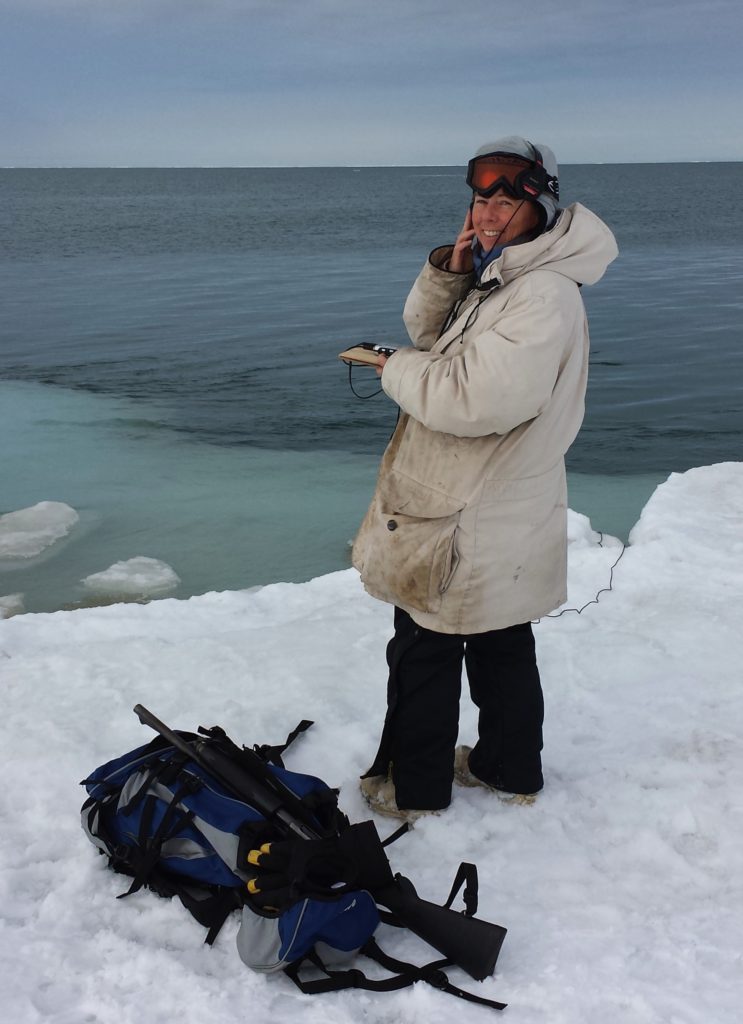
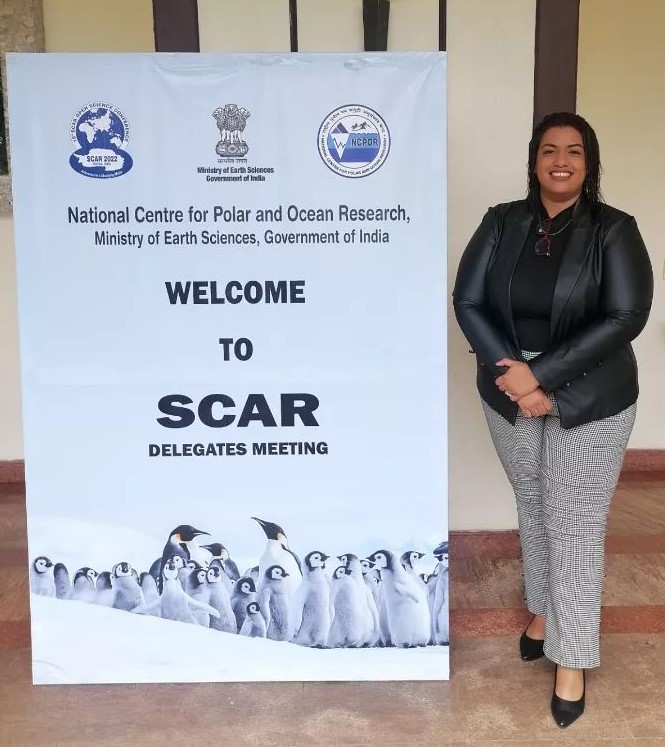
Ashley Casierra Tomalá
Discipline: Research management
Age: 32
Nationality: Ecuador
Organisation: Oceanographic and Antarctic Institute of the Navy (Ecuador)
Regional focus: Antarctica
Social media: Twitter and LinkedIn
What’s the work that you do?
I am a research analyst of the General Coordination of Antarctic Affairs and collaborate in the Research Unit. I am responsible for coordinating the development of the Ecuadorian National Antarctic Research Agenda. I support the process of calling for project proposals and I’m in charge of organizing academic and scientific events. In 2022, I was Ecuador’s National Delegate for SCAR and travelled to the SCAR Delegates Meeting in India. In my research project, I am working on the identification of natural threats around of the Pedro Vicente Maldonado Scientific Station.
What keeps you going?
My work brings me closer to people, to decision makers, to the Academy and institutes. I am passionate about talking about Antarctica, its ecosystems and their vulnerability. I want to make people aware of the role Antarctica has for the planet. And I enjoy supporting science and Ecuadorian researchers!
What’s your message to the world?
The true wealth of the planet lies in life itself, in its seas, its jungles, its deserts and in the majesty of its snow-capped peaks. In the recondite aspects of the planet, life is breathed. The future of generations takes refuge in the white and unhospitable continent.
Eva Horovčáková
Discipline: Social Sciences, Communications
Nationality: Slovakia
Organisation: European Polar Board (The Netherlands)
Regional focus: Arctic and Antarctica
Social media: LinkedIn and Twitter
What’s the work that you do?
I am working as a Communications Officer at the European Polar Board (EPB) based in Den Haag, Netherlands. The EPB focuses on major scientific, policy and strategic priorities in both the Arctic and Antarctic regions. As Communications Officer, my role is to effectively communicate to both EPB Members and to external audiences. Making a pro-active external communication strategy vital is very important in order to advance, coordinate and promote European polar research.
What keeps you going?
Passion for what I do and curiosity about polar matters. My interest in the Arctic started during my studies of International Politics & Migrations at Aalborg University in Denmark. Within the studies, I worked on various projects related to Arctic policies, climate change and sustainable development. I further deepened my knowledge as a trainee at the International Polar Foundation and as a volunteer at APECS Belgium, where I started to deal with the Antarctic for the first time. This eventually brought me to the EPB Secretariat where I am being inspired and motivated by my knowledgeable colleagues and people from the polar community.
What’s your message to the world?
As a result of climate change, especially the polar regions are undergoing drastic changes. However, changes in the polar regions are becoming more and more relevant to Europe and to the whole world. In regards to that, I would like to highlight the importance of polar science for which active communication is necessary. I believe it is polar science that helps us to make right decisions.
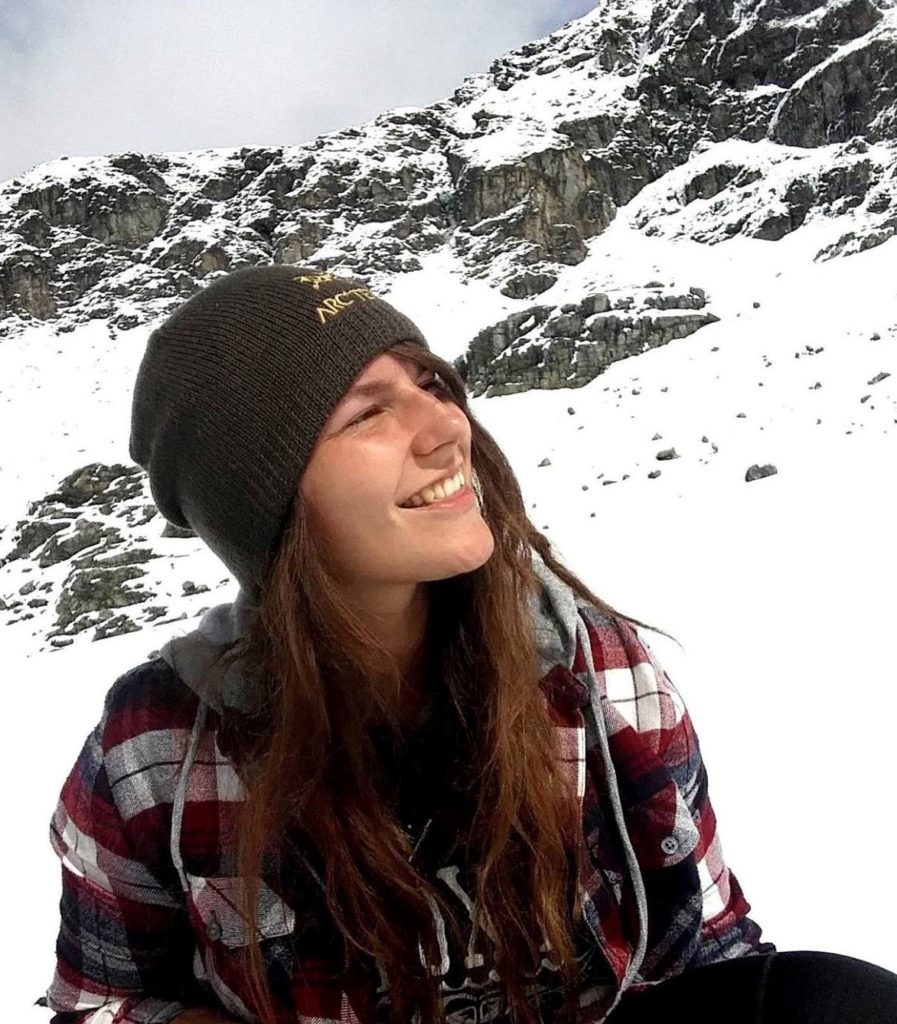
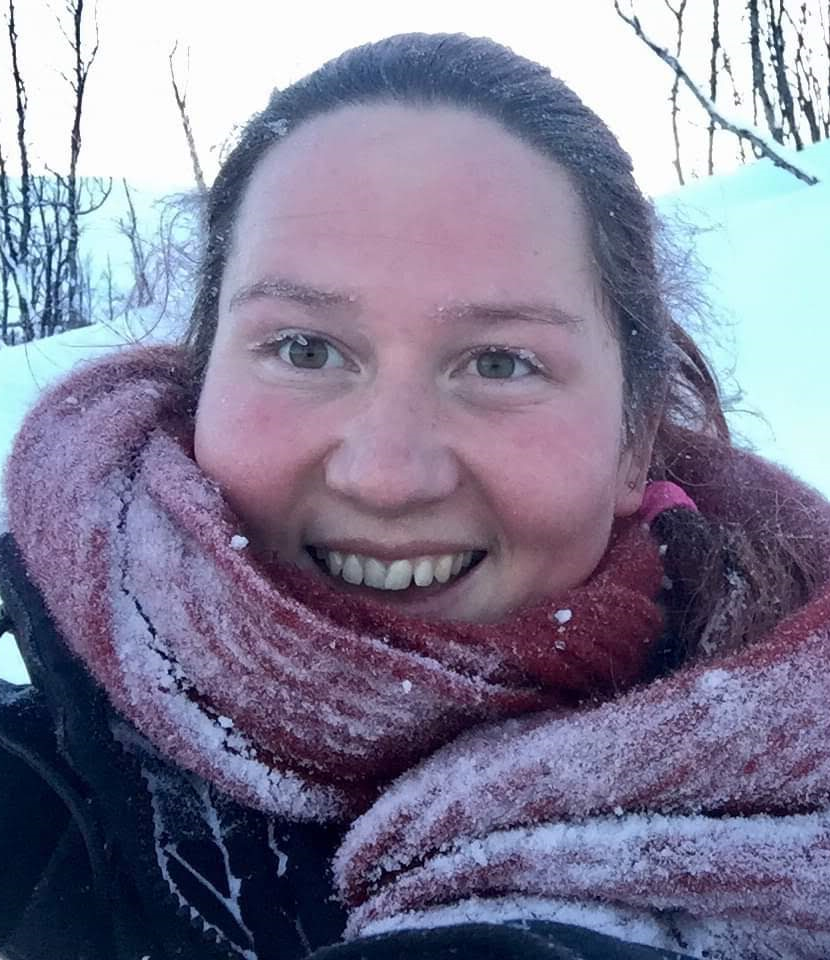
Lorna Little, PhD
Discipline: Science communication, polar botany
Nationality: Sweden and NZ Māori
Organisation: GRID-Arendal (Norway)
Regional focus: Arctic and Antarctica
Social media: Instagram and LinkedIn
What’s the work that you do?
I communicate science! I started with polar botany, moved to hydrology and now I work across multiple disciplines. My current role is Head of the Production and Communication Office at GRID-Arendal (an environmental communication foundation, delivering science to national and international decision-makers). My main task is leading an inspiring team of creative staff to deliver useful communication products that motivate action by decision makers. I also get to focus on measuring the impact of what we communicate, and how to best reach different groups, from polar audiences in the Arctic, to those elsewhere in the world.
What keeps you going?
I love working with science communication and using all the lessons I learnt during my time in APECS and while working in the Arctic and Antarctic research networks. Coming up with exciting, interactive ways to share science with others is really enjoyable, and so important in the effort to make our world a better place. I also like that I get to work every day with enthusiastic people, who are so knowledgeable about what they do in data analysis, digital user engagement, multimedia narratives and all the details of science communication.
What’s your message to the world?
Dare to be brave! Our changing world needs brave decisions, coming from scientists, communicators and decision-makers working together.
Ankitha Reddy
Discipline: Remote Sensing & GIS
Age: 27
Nationality: India
Organisation: Indian Space Research Organization (India)
Regional focus: Antarctica
Social media: LinkedIn and Twitter
What’s the work that you do?
My work predominantly involves acquiring, disseminating, and analyzing IRS satellite data. For 14 months, I was part of a three-members team of the Antarctic Ground Station for Earth Observation Satellites (AGEOS), established by the Indian Space Research organization. AGEOS is responsible for the smooth flow of data, communication operations of various IRS missions, and maintenance of Bharati Station’s SATCOM link for connectivity with the world. This Satcom station provides vital communication support to the Indian scientific community so they can pursue their research work at the Bharati research base throughout the year.
What keeps you going?
Initially, the prospect of Antarctic expedition pushed me to work harder and research further. I met wonderful people from various disciplines and passions as the journey began. I got the opportunity to explore the enchanting landscape of Antarctica. The continent is dangerously beautiful—a blessing in its serenity and a monster in its storms. The vast knowledge of the universe has always humbled me, and that is what keeps me going: Looking at the world through a satellite image allows us to learn so much about the Earth. I want to contribute to making space applications a part of day-to-day societal applications.
What’s your message to the world?
When in Antarctica, during the dark polar nights, I realized how we take for granted the rising and setting of the sun, the many little things in life and the planet giving us life. There are times when the expeditioners yearn for the sun, fresh vegetables, milk and other simple things. Watching the incredible auroras reminded me of the magnitude of danger behind such magnificence and the many ways Earth is protecting us. Let us not take for granted what the planet is providing us now. If Mother Earth gives up on us, there is nowhere else to go.
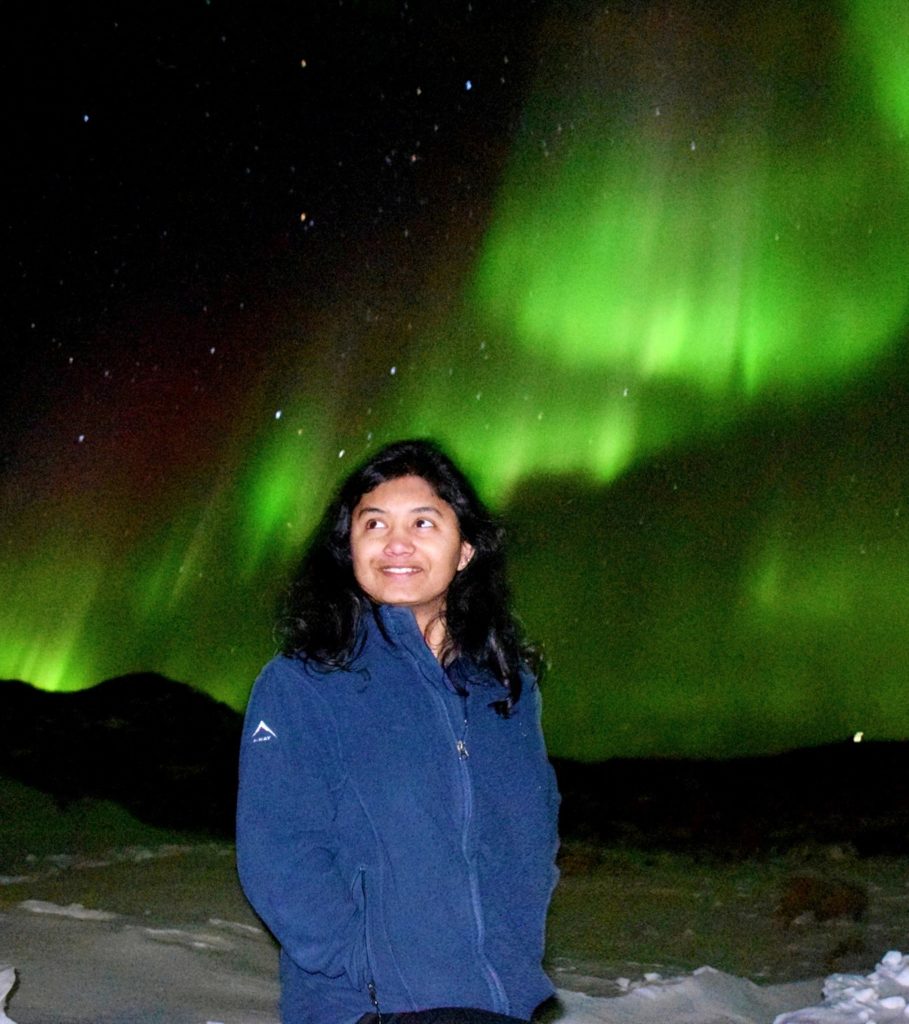
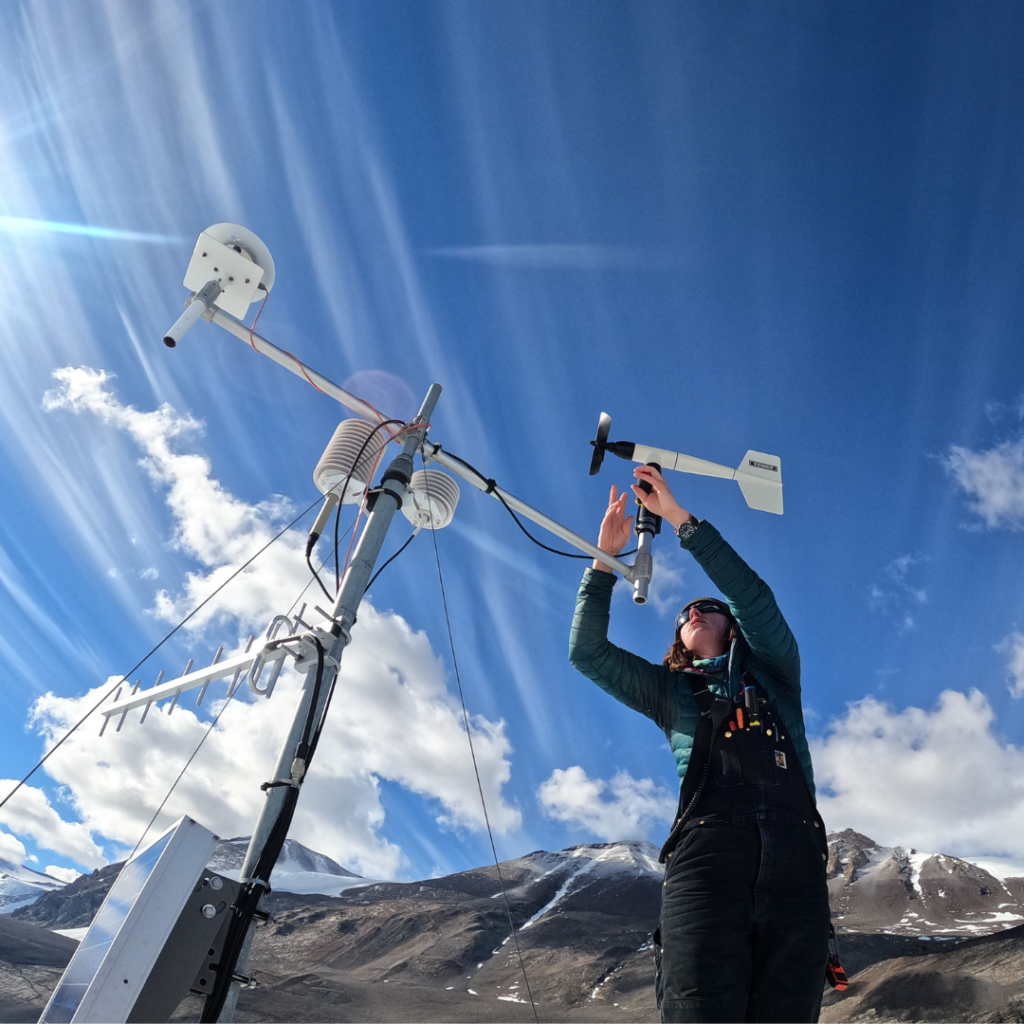
Krista Myers, MSc
Discipline: Earth Science
Age: 30
Nationality: USA
Organisation: McMurdo Long Term Ecological Research, MCM LTER (USA)
Regional focus: Antarctica
Social media: ResearchGate and project website
What’s the work that you do?
I am the lead field technician for the MCM LTER Meteorology and Physical Limnology Team, and I work in the McMurdo Dry Valleys. I maintain long term datasets, which includes weather stations, lake monitoring stations, and time lapse cameras to monitor landscape and ecosystem changes. In addition to research, I am also leading the new MCM LTER Sustainability Committee which empowers scientists to collectively brainstorm ways to make our fieldwork more sustainable. Our motto is: Less emissions. Less waste. More science!
What keeps you going?
Antarctica is my happy place – after 6 seasons it feels like home. However, the work is demanding (both physically and mentally). I stay motivated by reminding myself that the climate data I collect will be used for generations to come. Also, I am a goofy person and having fun is important. We have had a few bands throughout the years, and this past season we had a 5 person dance troop. It takes a certain type of person to want to work in Antarctica, and lucky for me, those are my favorite people to be around!
What’s your message to the world?
Polar scientists understand climate change better than most, and yet we tend to ignore how our own research contributes to it. All it takes is one field season to see how many resources and fossil fuels are used to do research in Antarctica. I used to think that as an Antarctic scientist, my work made up for this, however my mindset has shifted. Climate data is invaluable, but I don’t think more data alone will solve our problem – we need to also talk about climate solutions. A big part of that is getting off fossil fuels, and we need to ‘walk the walk’ by decarbonizing our beloved icy workplace as much as possible. The polar community has a unique role in addressing climate change, and at this point actions speak louder than words.
Margaret Bradshaw, D.Sc. Lond.
Discipline: Southern Hemisphere Devonian Geology
Age: 80
Nationality: Britain and New Zealand
Organisation: University of Canterbury and Canterbury Museum (New Zealand)
Regional focus: Antarctica, New Zealand and Australia
What’s the work that you do?
As a geologist I study rocks and fossils, and as both a lecturer and a museum curator I have enjoyed attempting to inspire and educate both students and the general public in the difficult explanation of a complex subject.
I am currently retired but have retained links with both the University and Canterbury Museum as they hold most of the material I have collected, and for which I have given many lectures. The bulk of my research over the years has focused on the Devonian Period, a time when life was only just emerging from the sea onto land.
As a schoolgirl in Britain during the 1950s, I was asked by my teachers what I would like to do when I left school. I said I wanted to be a geologist, because I had just collected some amazing fossil ammonites on a WEA trip near my home town. After encountering negative attitudes from my teachers (why not try office work or nursing?), but not my parents, I wrote to the British Geological Society for help. They suggested I get high marks in my senior exams and to apply to a good university, such as London. This I did and here I am now!
What keeps you going?
The compulsion to finally complete and document my research in Antarctica, New Zealand and Australia. Time seems to go faster as you get older and one feels the pressure to get things published.
What’s your message to the world?
Stay focused, enjoy the world’s magic, and make sure you give something back.
I like to think that my experiences will inspire other women, and girls, to try beyond the norm. With a bit of enterprise and determination girls and women can do anything.
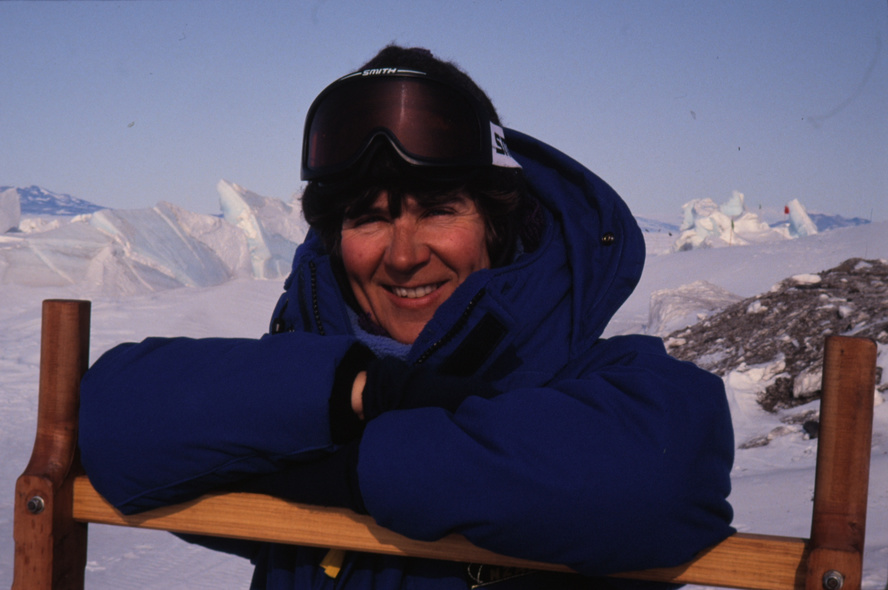

Narissa Bax, PhD
Discipline: Seafloor ecology, conservation management
Nationality: New Zealand
Organisation: South Atlantic Environmental Research Institute (SAERI) (Falkland Islands); Centre for Marinesocioecology, Institute for Marine and Antarctic Studies (Australia)
Regional focus: Antarctic
Social media: Twitter
What’s the work that you do?
My work supports the coordination and development of marine and coastal environmental management. I also maintain a research agenda focused on seafloor blue carbon and marine exploration. Including in the Falkland Islands mesophotic zone (from 30 – 150 meters) – where we recorded the presence of stylasterid (lace) coral gardens and rhodolith beds (coralline algae nodules) below 40 m during exploratory surveys in 2021. A focus on sampling in unexplored mesophotic habitats informs on threats and vulnerability across a vast area (c. 50,000 km² of the Falklands Conservation Zone) that encompasses multiple species exposed to various environmental gradients.
What keeps you going?
Curiosity keeps me going, there is so much to discover about the world and working in Antarctica and the sub-Antarctic – it feels like the edge of everything, exploring places that no one has ever seen before. Exploration is not a solo endeavour, so another thing that really keeps me going are the incredible people. It is a wonderful thing to have worked on ships surrounded by knowledge and skill-sets finely tuned to life at sea. To continue learning from such a diverse global network since my very first Antarctic voyage 2009/10 is something I feel incredibly grateful for.
What’s your message to the world?
There is a pervasive idea that, because places like the sub-Antarctic are isolated ‘and comparatively pristine’ (especially out of sight habitats like the deep sub-Antarctic seafloor), they are unimpacted by humans. Sadly, this is not the case given the typically slow growth rates, endemism and economic interest in these ecosystems and the compounding consequences of climate change. I hope that society comes to collectively realise this, whilst we still have wonderful biodiverse ecosystems such as coral gardens on the seafloor. Ultimately these deep safe havens are buffering humanity from climate change, storing and sequestering carbon, locking it away outside of the carbon cycle. Whilst animals such as corals hold evidence of the past climate in their skeletons and offer lessons from a time when the oceans were more acidic, less oxygenated and some ecosystems were responding (or being lost), like they are today.
Nina Gallo
Discipline: Science communication & polar tourism
Nationality: Australia
Organisation: Antarctic and Southern Ocean Coalition (ASOC)
Regional focus: Antarctic
Social media: Website and Twitter
What’s the work that you do?
I’m a guide, Zodiac driver and shipboard historian. When I’m not out in the field, I work as a polar science communicator, writer and strategic communications consultant. I also spend a lot of time reading around the environmental humanities, climate science and systems thinking, and am inspired by exploring new ways to solve wicked problems and make decisions amidst uncertainty.
What keeps you going?
There’s something magnetic about the polar regions. I’ve always been drawn to the contradictions of these stark, spare landscapes that are somehow also brimming with life. When we step away from the hustle and expectations of daily life in the lower latitudes we find the space to see and think in new ways. This time to reflect on our planet and our personal truths is, I think, incredibly powerful. Being part of that experience for others is a privilege. One of the best things about my work is the people. There’s this global community of amazing humans from all kinds of backgrounds, each with unique motivations and ways of thinking, and shared goals of planetary custodianship and conservation. I also love spending quiet time with seals, whales and seabirds, the ocean and the ice.
What’s your message to the world?
The sensory relief of the polar ice, ocean and sky can help us find the stillness in an otherwise chaotic, loud world, and maybe help us see things more clearly. Now more than ever, we must try to understand ourselves collectively within our nested historical and cultural contexts. We humans are marvellous little organisms: wondrous, creative, driven by hope, love and fear. We’re also just another very new addition to a complex ecosystem on an ever-changing planet that could shrug us off at any moment. I believe that it is from this place of humbled polarity, where we can acknowledge our power and insignificance, our capacity for creation and destruction together with compassion, that we can move towards a manageable future.
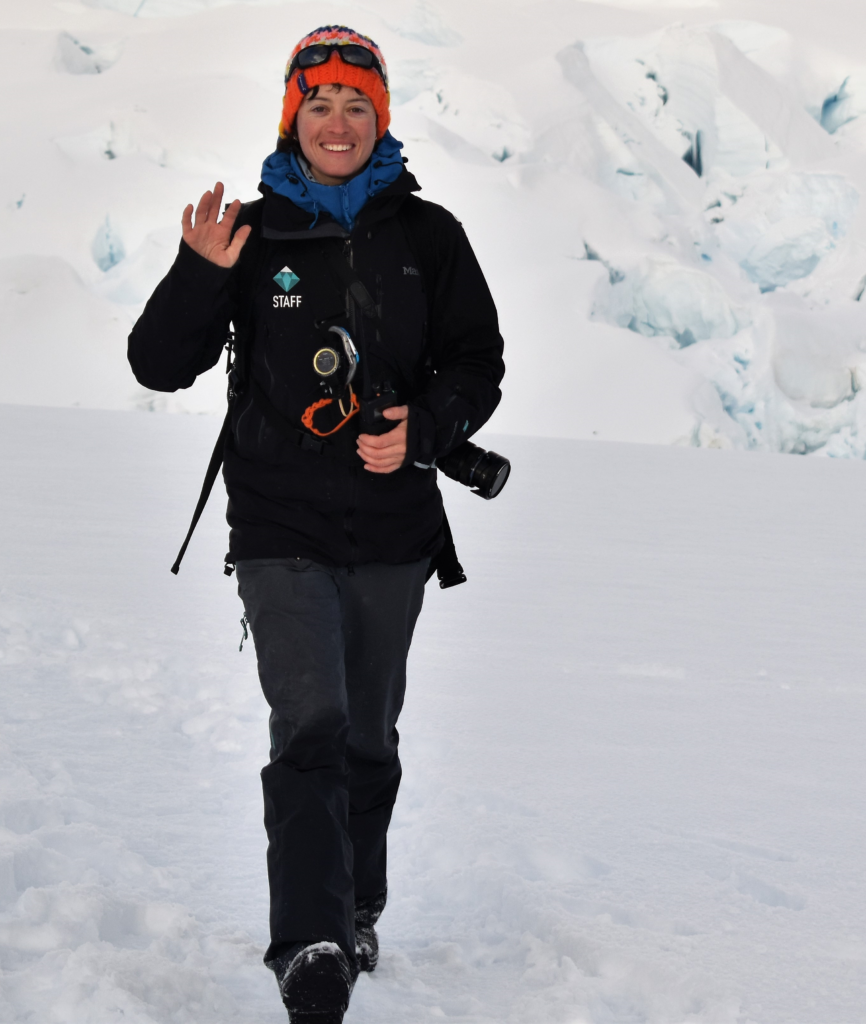
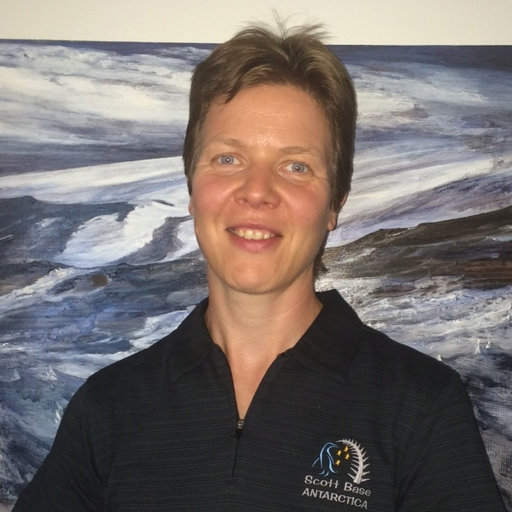
Daniela Liggett, PhD
Discipline: Antarctic environmental governance and tourism
Age: 45
Nationality: Germany and New Zealand
Organisation: University of Canterbury (New Zealand)
Regional focus: Antarctic
What’s the work that you do?
I am currently an associate professor in the School of Earth and Environment at the University of Canterbury, which means that I have teaching, research and administrative duties. I am coordinating and teaching into a fairly broad spectrum of courses, from bespoke Antarctic Studies courses to Geography and Environmental Science courses. My research evolves around all facets of human engagement with the Antarctic and Southern Ocean, from governance to tourism to science operations. I am particularly interested in environmental governance and the conservation of complex socio-ecological systems. Trans-disciplinary research and science-policy connections also excite me.
What keeps you going?
I am very fortunate at having been able to collaborate and develop friendships with wonderful people in the polar community. These rewarding connections, the interesting and important subject, and the opportunity (and challenge) to contribute to capacity building in the next generation of Antarctic and Arctic scholars keep me going. Working in academia can be stressful but equally very rewarding – we are given a lot of autonomy and flexibility, which I value.
What’s your message to the world?
Appreciate life and every living organism as if your life depended on it.
Sharon Robinson, PhD
Discipline: Climate change biology
Nationality: UK, Australia
Organisation: University of Wollongong (Australia)
Regional focus: Antarctic
Social media: Twitter
What’s the work that you do?
I investigate how plants respond to climate change with an interdisciplinary approach that encompasses a range of scales from chemical signatures at the cellular level through to ecosystem level spatial sciences. I use radiocarbon signatures, left behind in the atmosphere by nuclear testing last century, to date mosses and track changes in water availability around the coast of Antarctica. My group is also identifying the sunscreens these mosses make to protect themselves from elevated UV-B radiation due to ozone depletion. I apply new technologies, including the use of drones in Antarctica, to monitor vegetation health and productivity.
What keeps you going?
I am very curious and I love working out how things work and solving problems. Scientific research allows me to do this. I am lucky enough to work in Antarctica, which is a truly awe-inspiring place. Antarctic research often happens in international, interdisciplinary teams who work together achieve the goals of the Antarctic Treaty, to preserve Antarctica for peace and science. My work also means I get to share my expertise and to train the next generation of Antarctic researchers. I really do love my job as a research leader and feel fortunate to have this opportunity!
What’s your message to the world?
We know that climate change and ozone depletion has been impacting Antarctica for decades now. We also know that the future of the planet is linked to Antarctica’s future. Ice melting in Antarctica becomes the sea level rise that is already damaging our coastlines in Australia, the Pacific islands and across the world. We need to act now, to reduce carbon emissions to zero fast and to keep future temperatures as low as possible. I want to make a difference by Securing Antarctica’s Environmental Future and ensure we protect Antarctica, and our planet, for generations to come.
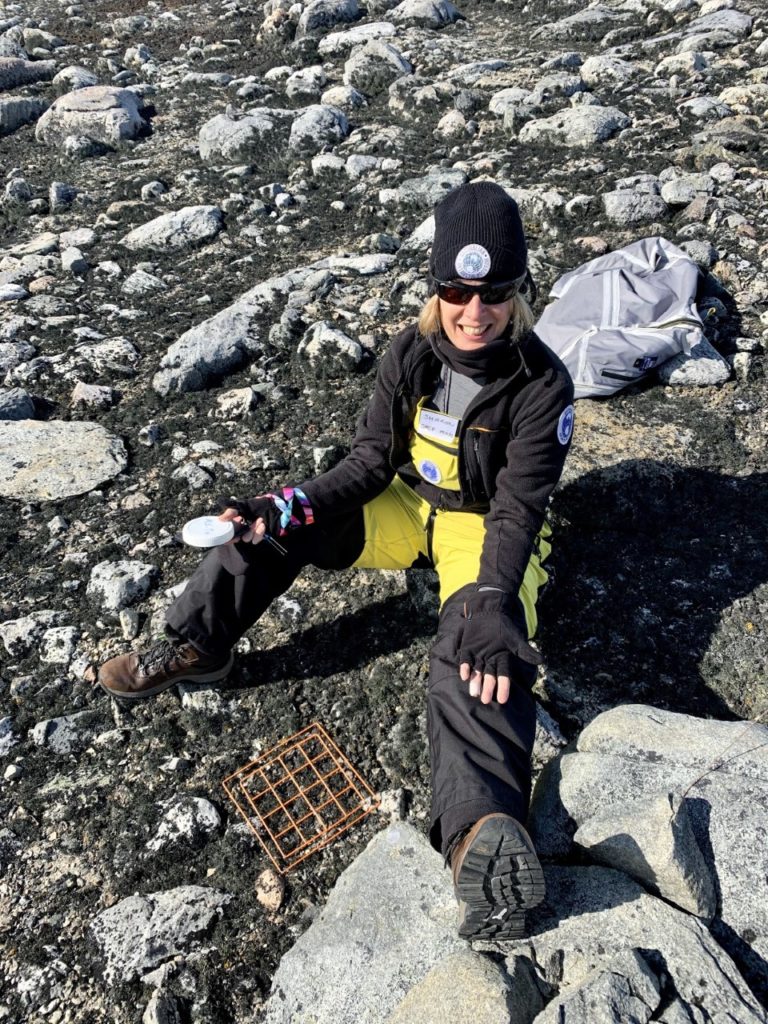
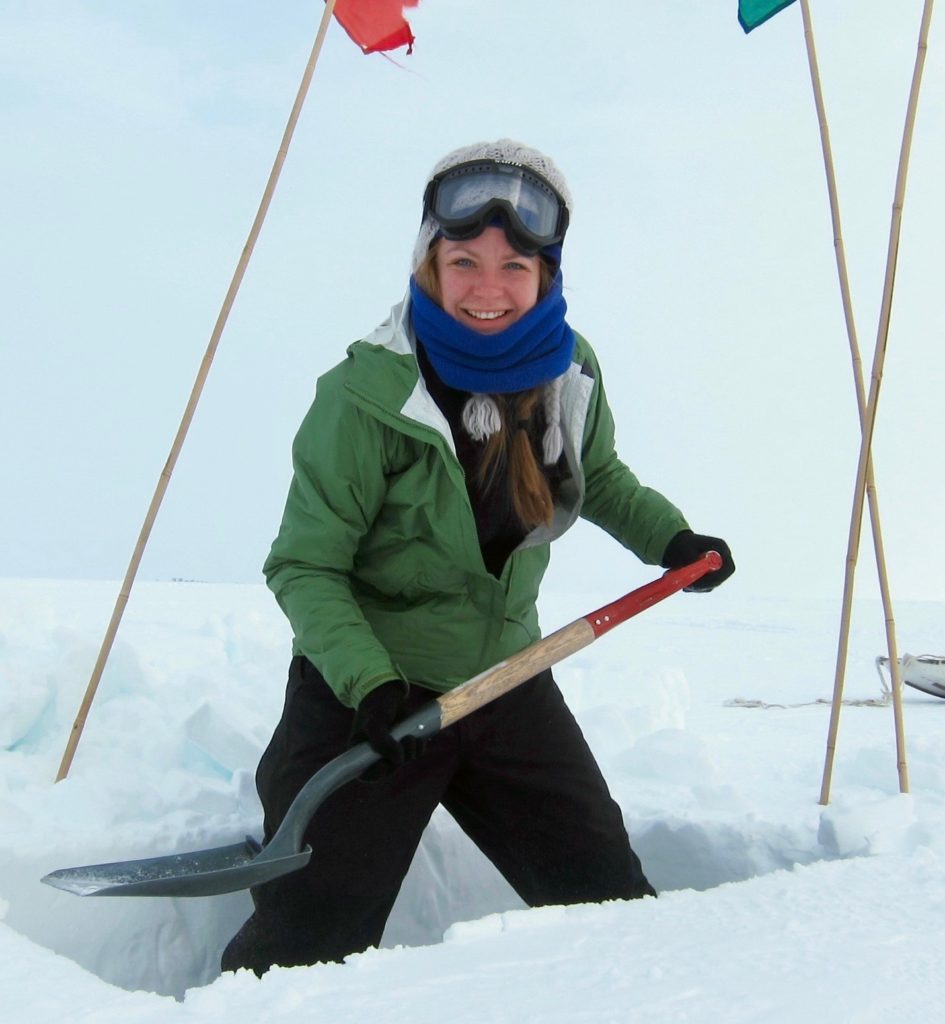
Morgan Seag, PhD
Discipline: Social science, climate policy
Age: 36
Nationality: USA
Organisation: International Cryosphere Climate Initiative
Regional focus: Antarctic
Social media: Twitter
What’s the work that you do?
I’m fortunate to wear several hats! I’m a researcher: I recently completed my PhD in Geography, working at the polar science/society/policy nexus with a focus on gender. I also work in polar science policy, e.g., with the Scientific Committee on Antarctic Research and the Antarctic Treaty Secretariat. My primary role now is Global Mountains Director for the International Cryosphere Climate Initiative, where I connect cryosphere science to global climate policymaking.
What keeps you going?
In my career, I seek out opportunities to learn, grow, and make a positive impact. Through research, I’ve learned an incredible amount from colleagues and interviewees about how and why our shared global spaces are imagined and used, to what end, and with what effects. I’ve tried to give back by applying my research to public discourses and EDI initiatives. In my policy work, I’m constantly learning from the communities with which I collaborate, and I’m grateful to be able to support the ambitious climate action we so urgently need. Being able to support positive global change keeps me going.
What’s your message to the world?
There are so many ways to make a difference through polar research. My hope is that while we all pursue our own paths in the field, we also work to create more equitable communities where all are able to thrive in, and benefit from, the globally important work of polar research.
Katharina Peters, PhD
Discipline: Marine Mammal Ecology
Age: 37
Nationality: Germany and Australia
Organisation: University of Canterbury (New Zealand)
Regional focus: Antarctic
Social media: Website and Twitter
What’s the work that you do?
I am a postdoc with Gateway Antarctica at the University of Canterbury. My main project focuses on population dynamics of Weddell seals in the Ross Sea to find out what environmental variables drive their population fluctuations. I have not been to Antarctica so far but very much hope to have a chance to go in the future and see this amazing ecosystem up close!
What keeps you going?
Constantly learning about the world we live in and trying to contribute to understanding it a little better, always aiming to use our knowledge to help conserve and protect this beautiful planet.
What’s your message to the world?
Follow your heart, and listen to your instincts. Don’t let other people and their expectations change you. Have courage and be kind. And most importantly: believe in yourself. You can do it!

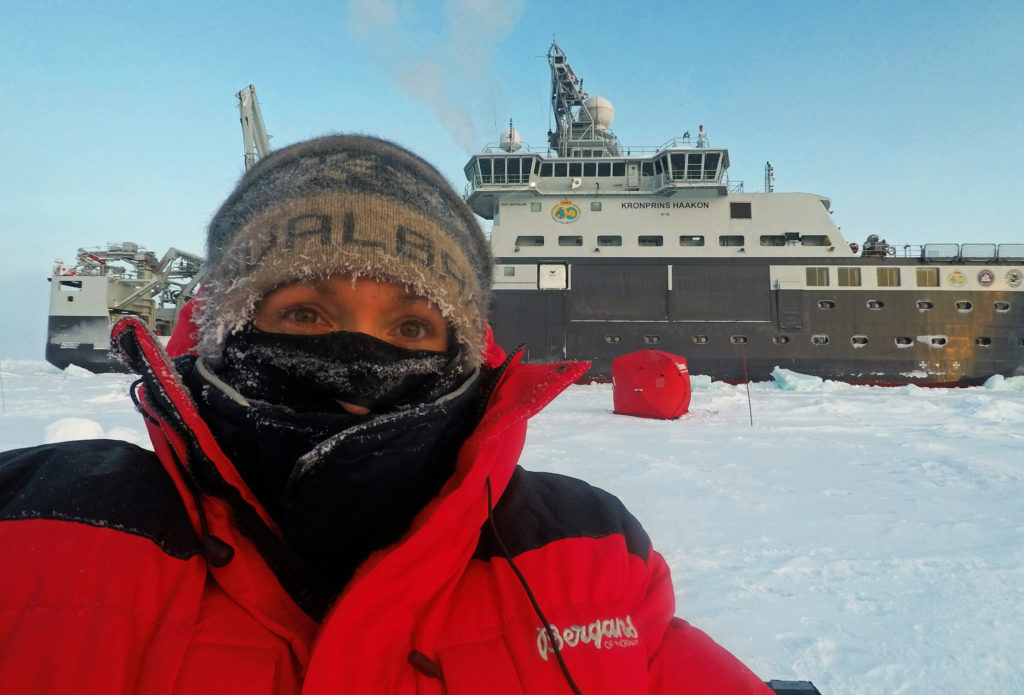
Libby Jones, PhD
Discipline: Chemical Oceanography
Age: 38
Nationality: Great Britain
Organisation: Institute of Marine Research (Norway)
Regional focus: Arctic and Antarctic
Social media: Twitter and Facebook
What’s the work that you do?
I am a chemical oceanographer investigating the carbonate chemistry and ocean acidification of polar oceans and biogeochemical cycling in sea ice. Through numerous oceanographic expeditions to the Southern Ocean, Arctic Ocean and field campaigns at Rothera Research Station, my work has contributed to seasonal and inter-annual studies in the Scotia Sea, Weddell Sea and Barents Sea, new carbonate chemistry time series’ in seawater and sea ice at the West Antarctic Peninsula, and carbonate chemistry in seawater and sea ice in the central Arctic Ocean.
What keeps you going?
Experiencing the polar regions is a great privilege. The unique environments of the Arctic and Antarctic are not yet fully understood and are undergoing rapid climate-driven changes. Having the opportunity to observe and document the polar oceans is a motivation to be able make a difference and share knowledge and inspire action.
What’s your message to the world?
The oceans and our planet are precious and are the supporters of all life. There has been a disruption to the balance of our planet and it’s time for us to come together and take care of the natural world. Be passionate and be curious and, from environments close to home to the polar regions, let’s find a new balance.
Kayla Tinker, MSc
Discipline: Operational Sea Ice Analyst
Age: 30
Nationality: US-American
Organisation: National Weather Service – Alaska Sea Ice Program (USA)
Regional focus: Arctic
Social media: Twitter and LinkedIn
What’s the work that you do?
I work as a sea ice analyst for the national weather service in Anchorage, AK. Each day, I create an updated sea ice concentration and thickness map using satellite imagery, and three times a week (M/W/F), I create a five-day sea ice forecast using sea ice models and meteorological conditions. The Alaska Sea Ice team also supports the Sea Ice for Walrus Outlook (SIWO) Program.
What keeps you going?
How surprising the ice can be and how quickly floes can move through the water. We look at real-time satellite imagery, and at the start of your day the ice is doing one thing, and by the end of the day it may have moved a lot quicker than you anticipated. I love learning about the local currents, winds, and other meteorological and oceanographic conditions that influence what the sea ice may do day to day.
What’s your message to the world?
Don’t be afraid of personal change and growth. My path, like many scientists, was not a straight line. Enjoy the ride, see the sights, and spend time with those who are important to you. Do work you are passionate about without sacrificing the time we need for creativity and joy.
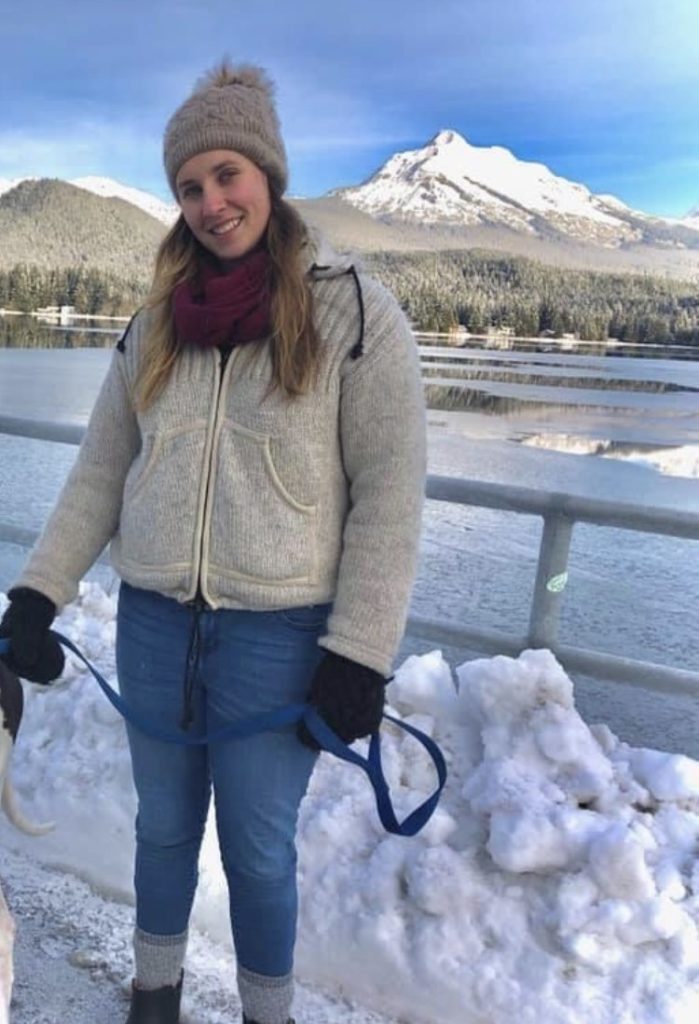
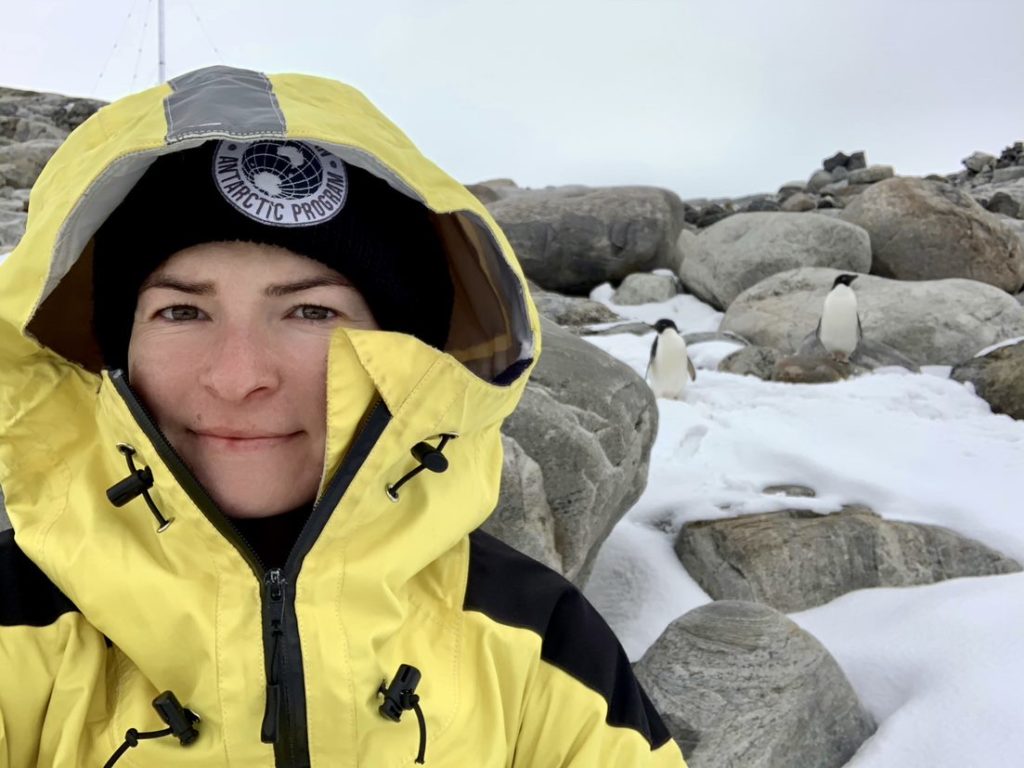
Krystal Randall, PhD
Discipline: Spatial biologist/micro-meteorologist (Antarctic vegetation)
Age: 31
Nationality: Australia
Organisation: Securing Antarctica’s Environmental Future (SAEF), University of Wollongong (Australia)
Regional focus: Antarctic
Social media: Twitter and Instagram
What’s the work that you do?
My research focuses on ultra-fine scale microclimate variation in ice-free areas where moss beds grow. How do these microclimates drive patterns in community composition and health of Antarctic moss beds? How do they affect the surface energy balance? This data can be used to improve regional weather models in Antarctica as well as predictions of permafrost thaw rates. I’m part of a team developing new microclimate sensing technology capable of measuring these variables and transmitting that data back to me regularly through the year. We’ll be deploying the first prototype of this technology in the upcoming field season.
What keeps you going?
I want to understand the fine-scale drivers of biological change in Antarctica. The better we know why the unique Antarctic environment is changing and what tiny climate conditions allow vegetation to persist in tiny refuges, the better we can protect it. I’ve wanted to be an Antarctic scientist since I was about 7 years old. I’ve always felt a pull towards the Antarctic wilderness and the incredible life that can survive there. I’m lucky enough to be doing exactly what I’ve always been driven to do, and that is what keeps me going.
What’s your message to the world?
No matter how far away from Antarctica you live, Antarctica plays a part in your immediate environment. In the same way that our actions can affect the climate and impact Antarctica, changes in Antarctica can also affect us. We are all connected to Antarctica, and securing Antarctica’s future is one of the best ways of securing our own.
Fowzia Ahmed
Discipline: Sea ice in the Arctic
Nationality: Bangladesh
Organisation: The Centre for Earth Observation Science (CEOS), University of Manitoba (Canada)
Regional focus: Arctic
Social media: Instagram and Twitter
What’s the work that you do?
My PhD research focuses on nutrient dynamics of sea ice algae in the Arctic. I am working on the driving factors of ice algal bloom production in spring. The research aim involves nutrient uptake and intracellular nutrient storage strategies of sea ice algae through tidal straits. My plan is to conduct both spatial and temporal sampling across tidal straits in Belcher Islands, Nunavut.
What keeps you going?
Sea ice algae are one of the significant primary producers in the polar ecosystem. Climate change is projected to have a significant yet varying effect on the growth of ice algae. Nutrient dynamics are changing spatially and seasonally due to the rapid melting of sea ice. My curiosity and passion for understanding this change are motivating me in my research career. As a polar researcher, I enjoy taking on the challenge for more knowledge in this field.
What’s your message to the world?
Life is full of surprises; you never know what may occur next. So, try to enjoy every breath you take here. Also, we need to save our planet if we want to have a livable future. My dream is that everybody around the globe will care about the conservation of nature.
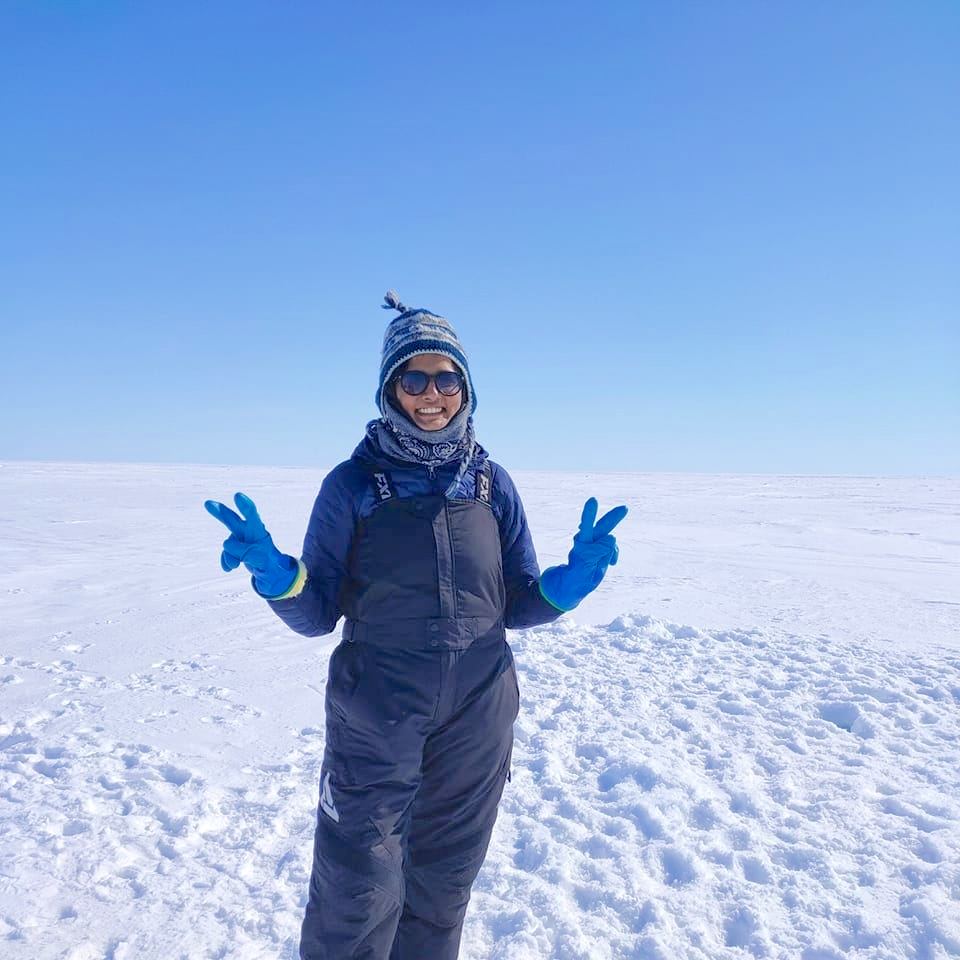
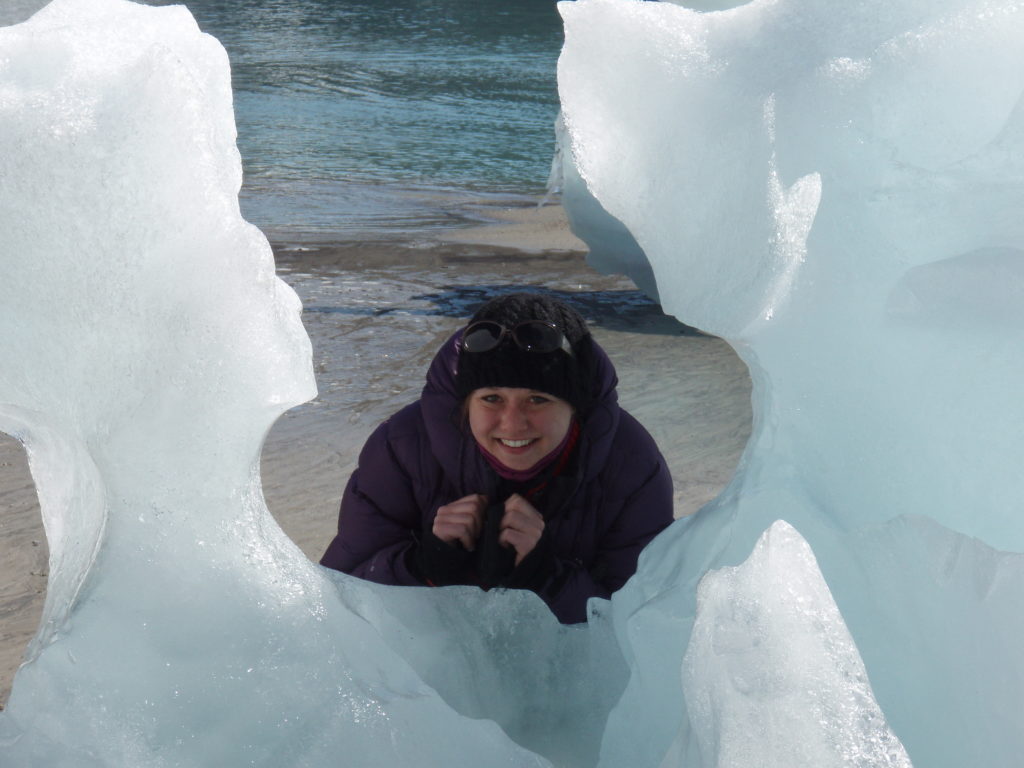
Inga Beck, PhD
Discipline: Permafrost, education
Nationality: Germany
Age: 38
Organisation: Environmental Research Station Schneefernerhaus (Germany)
Regional focus: Arctic
Social media: Facebook
What’s the work that you do?
I did my PhD in Arctic permafrost, but I am now more involved in evironmental and polar education and communication (knowledge transfer). In my current position I am responsible for all kinds of science communication to politicians, scientists and the public (of all ages).
What keeps you going?
I like being in nature and work for the most important thing on earth: our environment. For me it is essential to convince everybody that our world is the best we have, and that we have to save it.When I see that I convince people – especially kids – that makes me very happy.
What’s your message to the world?
Environmental changes already deeply affect us and will continue to affect those who come after us. It is up to us to make sure we leave the world a better place than we found it.
Rachel Downey, MSc
Discipline: Polar deep-sea biogeography
Age: 41
Nationality: UK and Australia
Organisation: Australian National University (Australia)
Regional focus: Arctic
Social media: ResearchGate and Twitter
What’s the work that you do?
I’m in the last year of my PhD researching our state of knowledge concerning marine genetic resources in extreme environments, specifically the deep-sea and polar regions. This type of biological data is eclipsing traditionally collected diversity and distribution data in terms of amounts and variety, and yet utilizing it is fraught with difficulties due to poor levels of data quality. I’m developing approaches and applications that demonstrate ways that we can improve this data for future research and conservation.
I’ve witnessed and been part of incredible changes in our ability to access data about all life on earth in the last ten years, and I want to continue helping to push this through, as new types of data become available. I’m actively involved in both deep-sea and polar communities, which keeps me in integrated in our amazing international communities. Making sure that everyone has the same access to data means that we have better research and improved conservation and management decisions; and that keeps me going.
What’s your message to the world?
Working on a Greenpeace campaign for better protection of the Antarctic seabed habitats this year, I had the rare opportunity to directly witness our deep oceans in a submersible; environments that few will ever get the chance to see in real life. We’re witnessing incredible changes in our environment, and polar and deep seas are starting to show these impacts. The more knowledge we have, the better we can globally and nationally protect these fragile environments. We need to involve everyone better, so that they care about the planet around them.
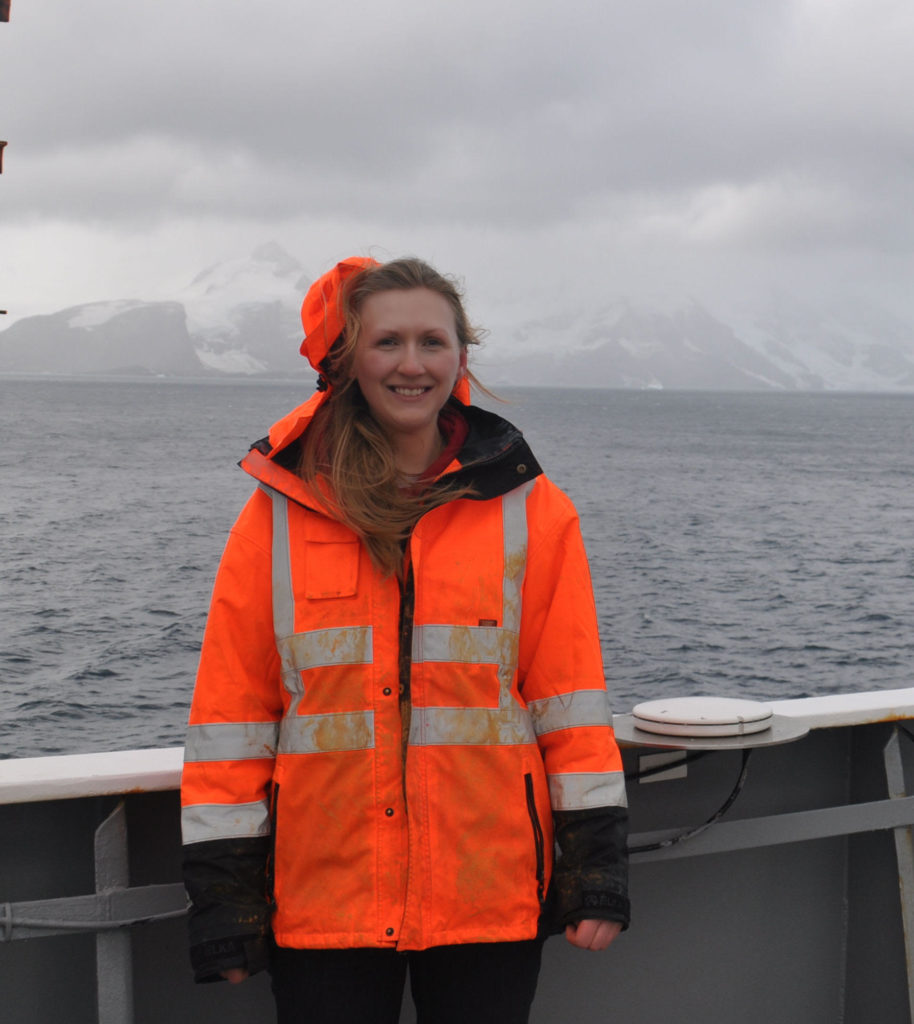
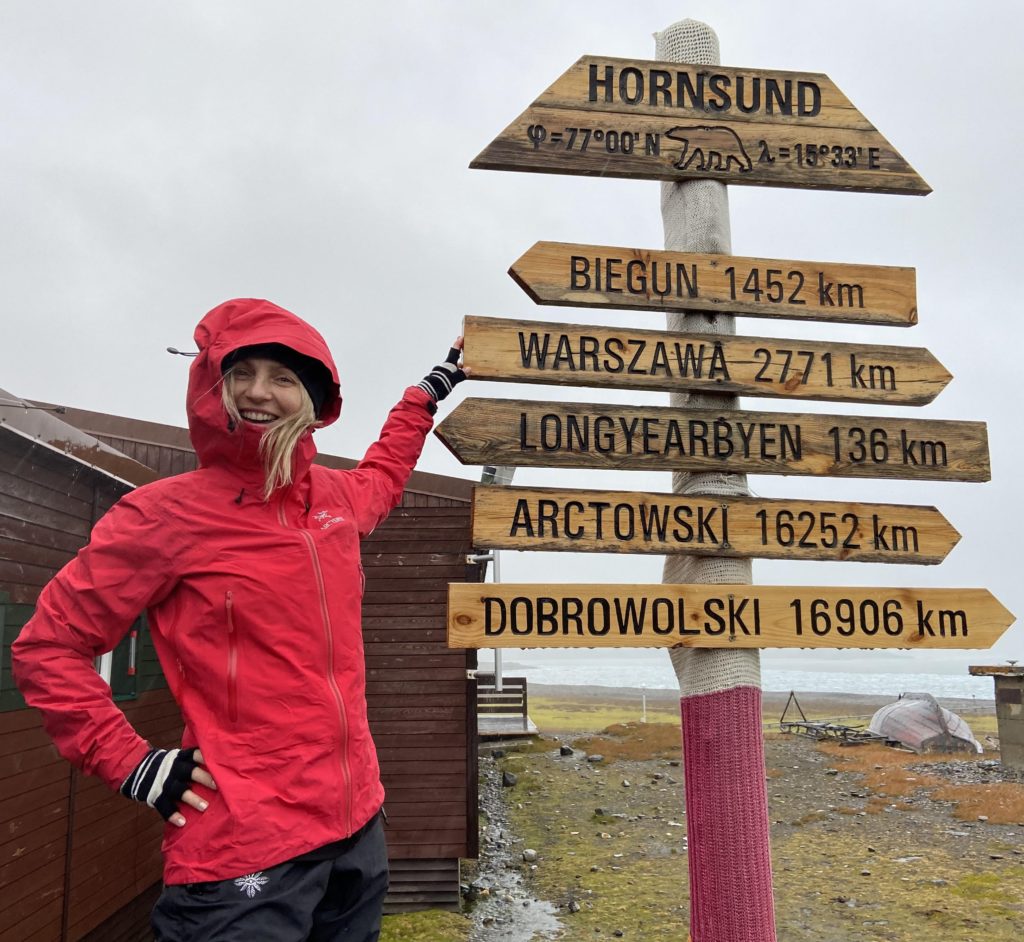
Prof. Monika A. Kusiak
Discipline: Earth Sciences
Nationality: Poland
Organisation: Institute of Geophysics Polish Academy of Sciences (Poland)
Regional focus: Arctic and Antarctic
Social media: ResearchGate and LinkedIn
What’s the work that you do?
I am an isotope geochemist that dates minerals! My major interest is in early Earth processes. My fieldwork is in polar regions because this is where many of the oldest rocks are. I have participated in 7 polar expeditions, leading 3 of them. Two of these were to Polish Antarctic stations on King George Island, West Antarctica (H. Arctowski) and the Bunger Hills of East Antarctica (A.B. Dobrowolski). The other were to the Arctic, including the Polish polar station Hornsund on Spitsbergen, as well as in Labrador and Greenland. I apply a variety of isotopic techniques to the mineral zircon in ancient rocks, in order to understand the behaviour of elements at the nano- and micro-scale. This provides us with rare insights into the early evolution of our planet.
What keeps you going?
The joy of uncovering the unseen. When you prepare an expedition, you get this incredible feeling that most probably no-one was there before, that maybe you can discover something new, something incredible and unknown. Then there is the special feeling from working in polar regions. My experience of the Arctic is very different from that of Antarctica. Up north, we have a variety of dangerous wild animals and irritating insects. In the south, the dangers lie in the inanimate forces of nature, especially the climate. Antarctica is so empty, vast and peaceful that you feel like the world has stopped around you and then you are closer to God. However, it doesn’t really matter if you are up north or down south, you are at the end of the world, alone with this amazing nature around you, and time runs so much slower than in other places.
What’s your message to the world?
Do whatever you dream to do. Don’t be afraid to walk in the clouds and go outside of the box.
Katelyn Hudson, D.Arch, PhD
Discipline: Architecture
Age: 35
Nationality: US-American
Organisation: Vermont Technical College (USA); Cushman Design Group
Regional focus: Antarctic
Social media: Facebook and ResearchGate
What’s the work that you do?
My work investigates how people shelter themselves and how to continue to create architectural interventions that are attuned to the wellbeing of the occupants. It has developed into three main parts – practice, academia, and research. In my professional practice as an architectural designer, I am working towards licensure at a residential firm. I also teach construction drawing and detailing in an Architectural Engineering program. Lastly, I have continued my research into the architecture of Antarctica, which enhances the two other aspects of my work life.
What keeps you going?
The evolution of how humans shelter themselves. Each case study or client presents a unique opportunity to further explore the decisions and patterns around dwelling. Each illustrates challenges and creative approaches to solve them, which I can apply in professional practice. While Antarctica represents an extreme environment, aspects can be applied in Vermont and provide engaging anecdotes for my students.
What’s your message to the world?
Never stop learning, always be open to listening. In any environment it is important to foster a habitat that is beneficial for those living in it, whether that is the humans, flora, or fauna. By observing and listening, we can learn, and evolve.
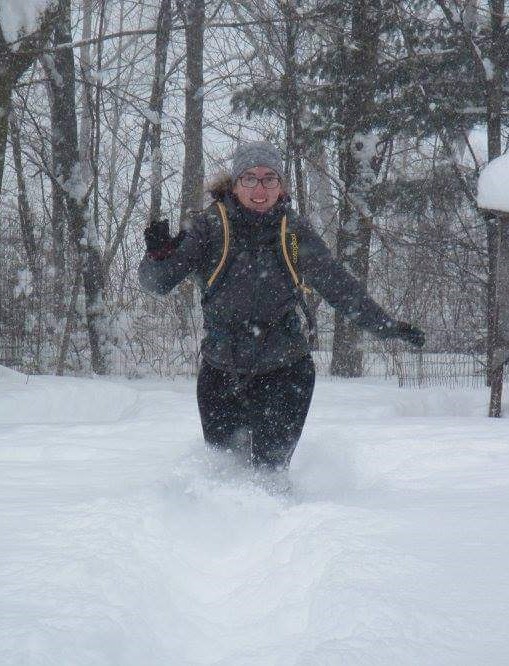
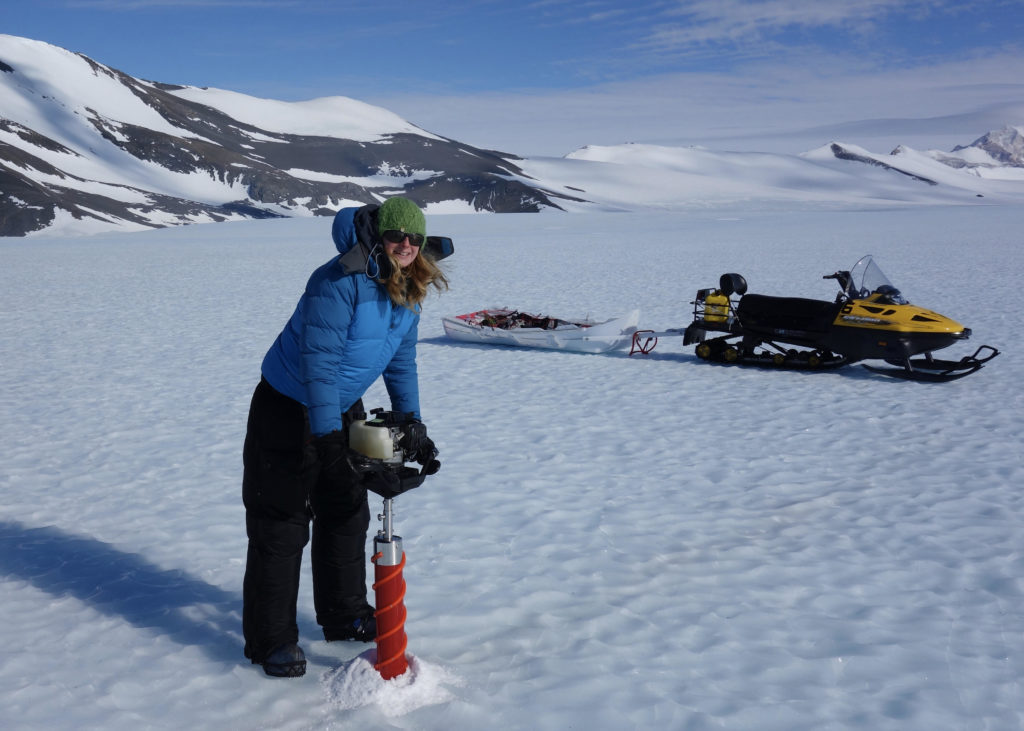
Helen Millman, PhD
Discipline: Glaciology
Age: 34
Nationality: UK
Organisation: International Cryosphere Climate Initiative
Regional focus: Antarctic
Social media: Twitter
What’s the work that you do?
I did an ice sheet modelling PhD, where I looked into Antarctica’s contribution to sea level rise during the last warm period in the Earth’s history. Now I’m the Antarctic Director at ICCI, where I try to explain Antarctic science to policymakers.
What keeps you going?
The need to be an insufferable know-it-all. I didn’t know that I was such a know-it-all until I started talking to politicians. Billy Connolly once said that “the desire to be a politician should bar you for life from ever being one,” and I think that he was probably right.
What’s your message to the world?
“Get over yourself!” Antarctica is so vast and inhospitable, it gives you a feeling of how insignificant you are. I think that it’s good to try and hold onto that perspective back in the real world. We can all get too caught up in our own heads.
Sofia Kjellman, MSc
Discipline: Arctic Geology, Paleoclimatology and Geochemistry
Age: 32
Nationality: Sweden
Organisation: UiT The Arctic University of Norway
Regional focus: Arctic
Social media: ResearchGate and Instagram
What’s the work that you do?
I study how the Arctic climate has changed since the last ice age. With global warming, the Arctic is getting wetter. By studying precipitation changes during past warm periods, we can better understand the mechanisms controlling these changes. My PhD research focuses on precipitation seasonality on Svalbard, Arctic Norway, using biomarkers preserved in the bottom of lakes. I analyze the hydrogen isotopic ratios of ancient plant leaf waxes, which ultimately reflect the isotopic composition of precipitation, and therefore give us information about past climate.
What keeps you going?
My fascination with the Arctic! Research provides amazing opportunities to visit and learn more about these unique and vulnerable landscapes. I also find it fascinating that we can use chemical, biological, and physical signals preserved in geological archives (e.g., cores of mud from lakes) to better understand processes that have changed the Arctic in the past, today, and are likely to do so also in the future.
What’s your message to the world?
I want to encourage other early career researchers to stay curious and not being afraid of stepping out of their comfort zones. I believe in inclusivity, knowledge sharing and good communication. By working together, we can learn and do so much more!
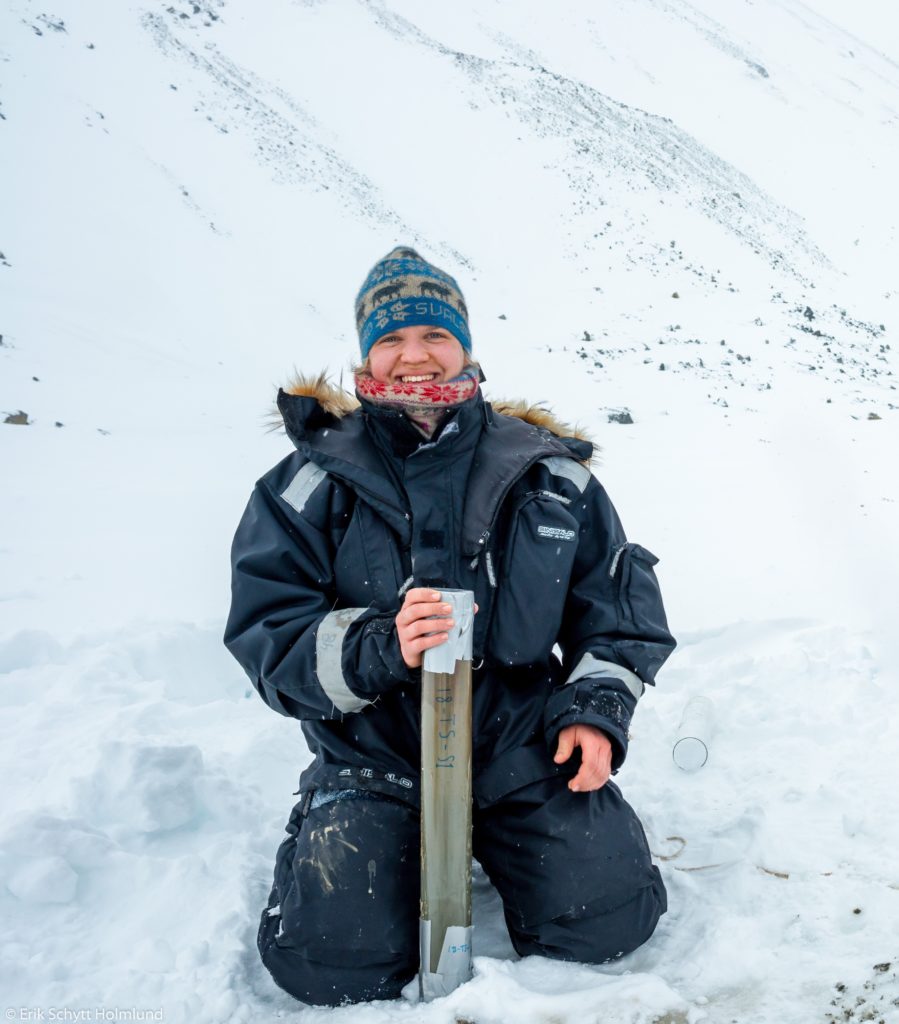
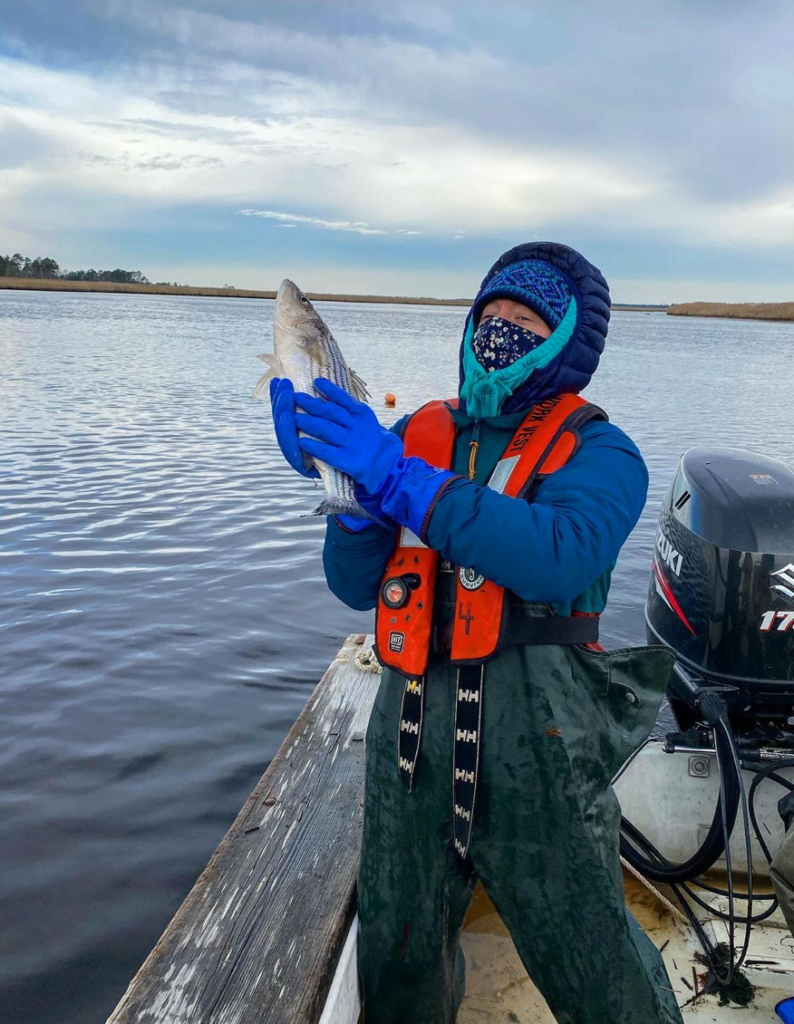
Tait Algayer
Discipline: Polar Genomics
Age: 23
Nationality: US American
Organisation: Washington State University (USA)
Regional focus: Arctic and Antarctic
Social media: Instagram and Twitter
What’s the work that you do?
Generally, I’m interested in genomic adaptations to extreme environments. More specifically, I study evolutionary genomics of antifreeze proteins in Zoarcid fishes. My group uses computational methods to sequence and assemble genomes and transcriptomes of Arctic and Antarctic zoarcids to gain insight on how gene copy number, tandem repeat number, and isoform interactions influence thermal hysteresis activity of antifreeze proteins. The broader goal of this work is to identify molecular pathways underlying adaptation to polar environments.
What keeps you going?
My supportive lab group keeps me going and inspires me to continue learning new computation skills (which I sometimes struggle with). Besides my coworkers, I love the work that I do because I get to learn about the ‘coolest’ organisms and explore the underlying mechanisms that allow them to thrive in such harsh environments. I also love the ugly looking fishes that I work with, they really bring a smile to my face.
What’s your message to the world?
Stay curious! Never forget what got you interested in science in the first place. For me, it was my love of the ocean and the fascinating creatures that live in it.
Agnieszka Kruszewska, MML, MBA, MHRM
Discipline: Management
Age: 45
Nationality: Poland
Organisation: Institute of Biochemistry and Biophysics PAS (Poland)
Regional focus: Arctic and Antarctic
Social media: Facebook and LinkedIn
What’s the work that you do?
I work as the Administrative Director of the Institute of Biochemistry and Biophysics of the Polish Academy of Sciences (PAS). Since 2012 I manage the Polish Antarctic Station H. Arctowski, located on King George Island, South Shetland Islands (West Antarctica). My job is to supervise the logistics and investments carried out at the station. In connection with the experience gained in the management of polar infrastructure I have the honor to chair the Polish Polar Consortium, to be a member of the Presidium of the Polar Research Committee of the PAS, to represent the Polish Antarctic Program in COMNAP.
The environment I work in, particularly related to the polar regions, makes my daily life dynamic and challenging, but also gives me the opportunity to work with people who are driven by passion for what they do. It is the people I meet, the passion we share and the mission to work and protect for the benefit of these unique regions of the world that gives me the strength to face any challenges I encounter. Currently, the biggest one is a comprehensive modernization of the infrastructure of the H. Arctowski Polish Antarctic Station. Keep your fingers crossed 🙂
What’s your message to the world?
Never stop being curious about the world!
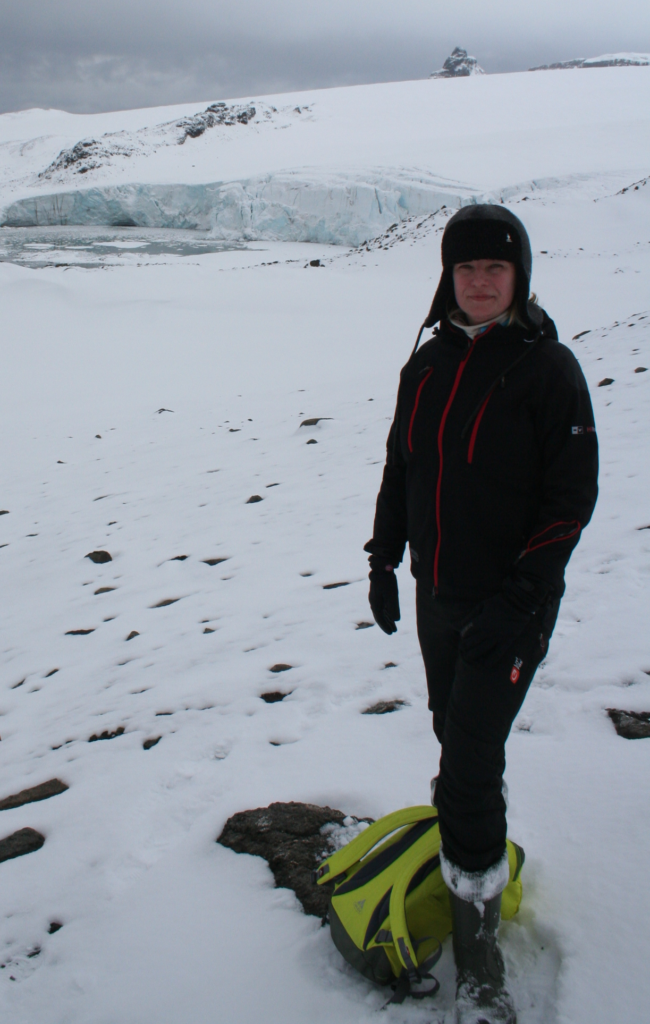
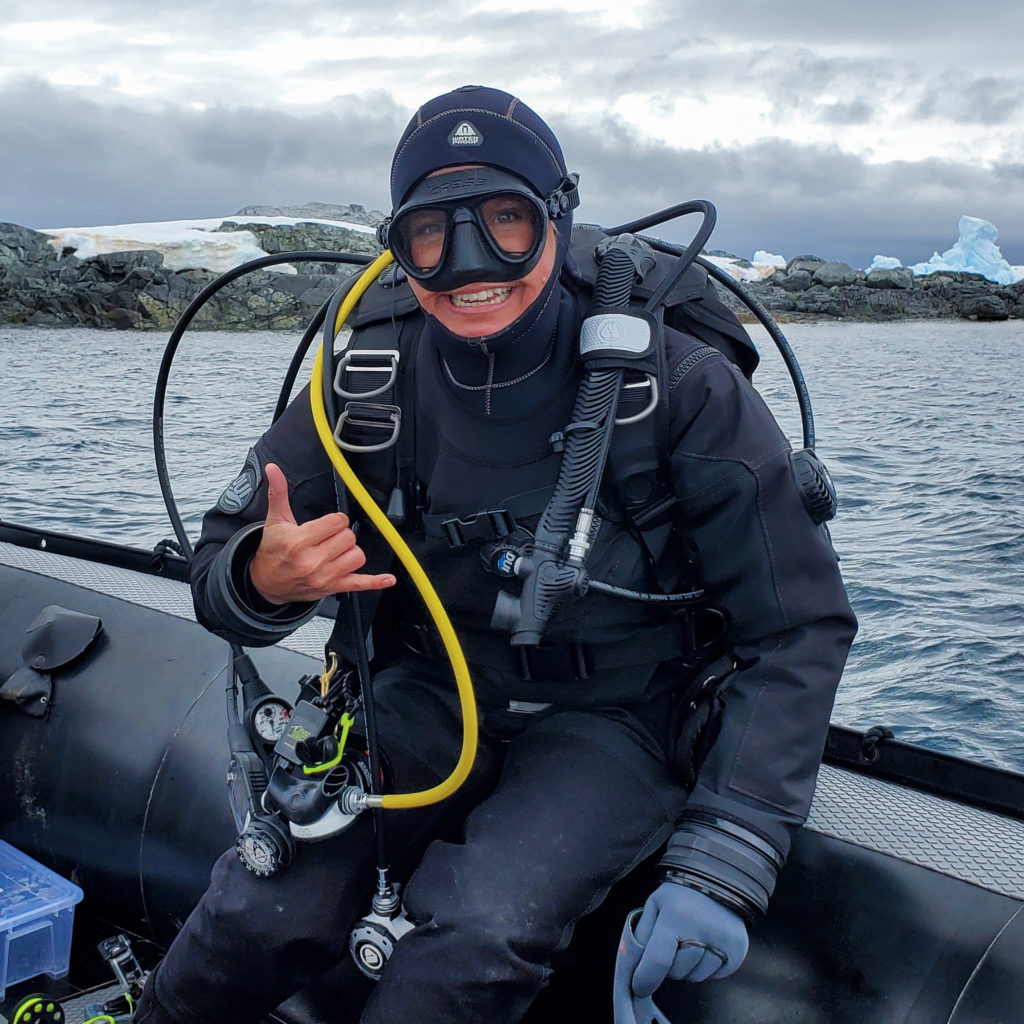
Christine Regent West
Discipline: Marine Conservation Photography/Videography, Education and Polar Diving
Age: 42
Nationality: US-American
Organisation: Lindblad Expeditions (USA)
Regional focus: Arctic and Antarctic
Social media: Instagram and LinkedIn
What’s the work that you do?
I work as an Undersea Specialist and Expedition Diver. A large responsibility of my job is to document rarely visited areas underwater through video and photography using a variety of cameras and an ROV, edit the footage and create a short documentary to present and interpret as an educator and lecturer onboard small expedition ships. In order to reveal these hidden ecosystems, I scuba dive and snorkel in polar and temperate water in areas around the world including Antarctica, Alaska and Canada.
Exploring underwater in polar regions is the greatest privilege. I visit these places on earth that are nearly inaccessible, have often never been seen, are not fully understood and yet are rapidly changing due to the warming of the earth. Having the chance to document these places that influence our lives and actions worldwide before they are irreversibly altered, to be a voice for ecosystems that need immediate protection, keeps me inspired to work every day.
What’s your message to the world?
The world’s oceans are complex and deeply connected, circulating water around our planet that protects our every day, individual lives. We have a responsibility to listen closely to the ocean when it is showing signs of degradation, take serious action, change our damaging behaviors, and protect the ocean as the ocean protects us.
Gautami Samui, PhD
Discipline: Biogeochemistry of glacial environments
Age: 33
Nationality: India
Organisation: National Centre for Polar and Ocean Research (India)
Regional focus: Antarctic
Social media: LinkedIn and ResearchGate
What’s the work that you do?
I am working in the multidisciplinary field of biogeochemistry in glacial ecosystems. My research has been focused on the dynamics of dissolved organic matter in different supraglacial ecosystems. Understanding the complex interlinkages of microbial activity, nutrients, and other parameters with photochemical processes in supraglacial and allied ecosystems to map their response and resilience to changing climate has been my forte.
My job has introduced me to incredible people and their extraordinary passion inspires me. It has given me the privilege to visit astonishing landscapes. The moment I land in Antarctica, I feel an incomparable silence and stillness amid chaos. I have visited the continent thrice, but this feeling never gets old and is unforgettable. The long walks involved to access the sampling locations of Antarctica are physically demanding, but the serenity of the continent is encouraging. Constant and unconditional support from my family keeps me going. I do this work because it brings me immense joy to be a part of a bigger community working towards only one objective – protecting the climate.
What’s your message to the world?
It is a crucial time in human history and vital for our generation to realize that unlike shifting homes, we cannot shift planets. It is time we change our lifestyles to save this planet for ourselves and for the next generations. For that, it is essential that each one of us take conscious steps towards it.
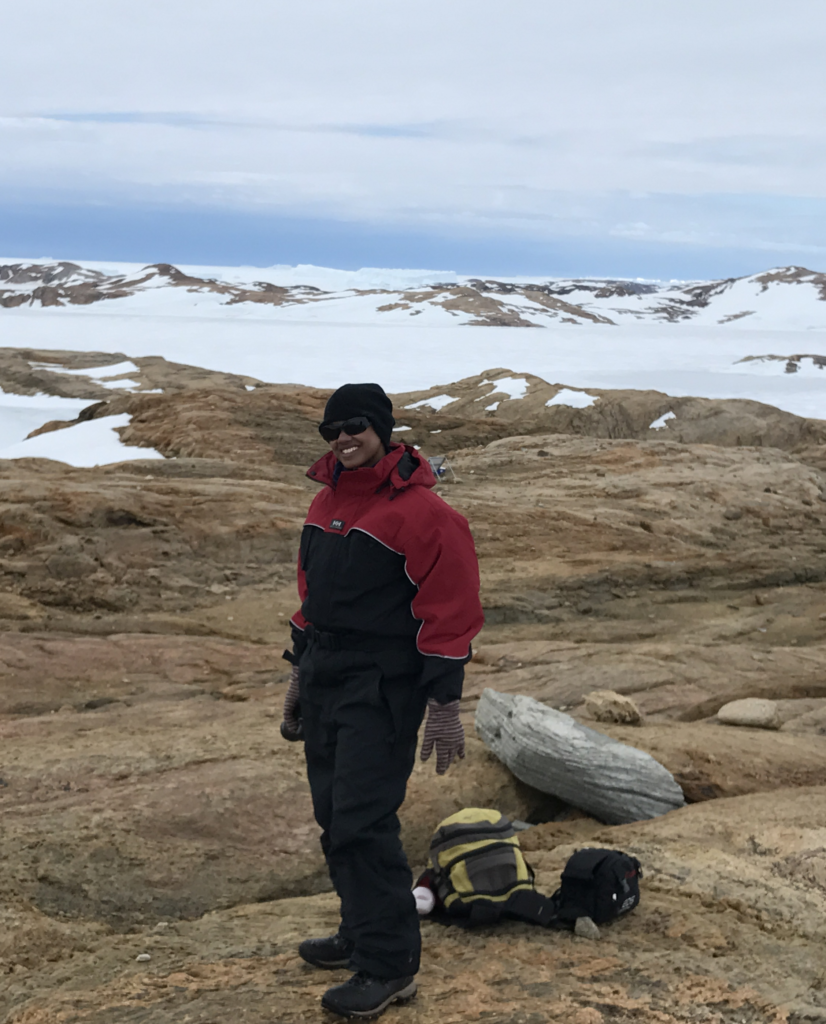
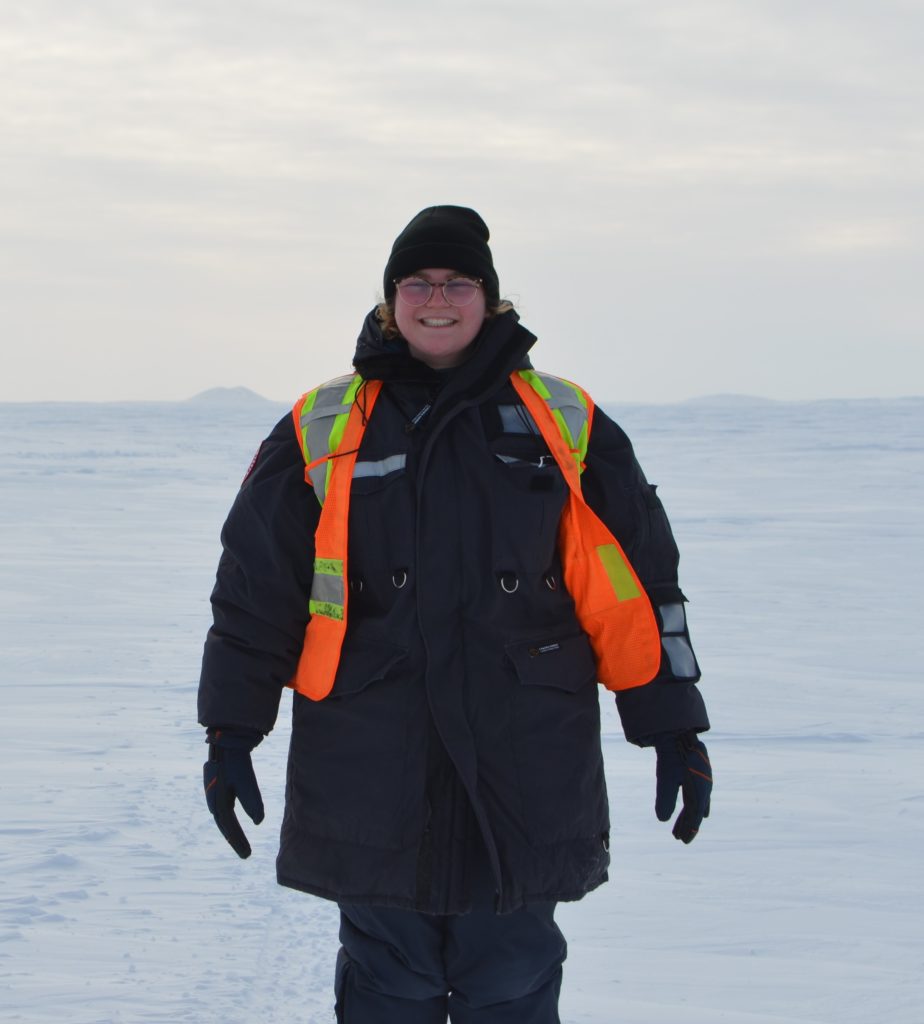
Rae Landriau
Discipline: Contaminant transport in permafrost (drilling waste management and monitoring)
Age: 22
Nationality: Canada
Organisation: Carleton University (Canada)
Regional focus: Arctic
Social media: LinkedIn and Instagram
What’s the work that you do?
What keeps me going is seeing how my research directly has an impact. For example, my work is partnered with the Inuvialuit Regional Corporation. Seeing how my research, methodologies, and collaboration with them directly impact the programs they’re running and their work, fuels me. Working collaboratively on this project and seeing its applicability is very rewarding and pushes me forward on tough days. Another thing that drives me is how engaging this work is. I am learning something new all the time, and I am constantly being challenged to grow.
What’s your message to the world?
There are opportunities all around you, so send that email, follow up with people, and don’t be afraid to go and put yourself out there. So often, we’re so afraid to fail that we don’t even start, but failure is part of life, so put yourself out there because you might stumble upon the most life-changing experience. If I hadn’t followed my own advice, I wouldn’t be where I am today, and quite frankly, my life would be completely different.
Lisa E. Kelley
Discipline: Tourism Strategy, Operations, and Logistics
Age: 45
Nationality: US-American
Organisation: International Association of Antarctica Tour Operators (IAATO)
Regional focus: Antarctic
Social media: Instagram and LinkedIn
What’s the work that you do?
As Director of Operations and Government Affairs, my job is two fold. The Operations Department in IAATO is responsible for creating and/or collating all the tools Operators require to operate in a safe and environmentally responsible manner. These tools range from guidelines on specific activities, to a database driven ship scheduler to aid with site visitation schedules following Antarctic Treaty and IAATO guidelines. The other side of my job is to communicate with government authorities and other Antarctic stakeholders to aid in the understanding of tourism in Antarctica and how it can be conducted in a safe and environmentally responsible manner, as well as to contribute to tourism management discussions when appropriate. I am also IAATO’s Head of Delegation for the Antarctic Treaty Consultative Meeting.
What keeps you going?
I LOVE my job because every day is different, presents new challenges, and I feel like I am contributing to the greater good, which is of great importance for me. (Skip down to my personal philosophy;-). Whether delivering the mission and vision of IAATO, mentoring others, brainstorming with stakeholders and colleagues, or contributing to discussions and decisions about Antarctica’s future – it all keeps me excited, engaged, and constantly learning. What’s more is in every facet of my job, I am surrounded by those who have just as much passion for the Antarctic as I do, and all that positive energy makes it very easy to stay inspired.
What’s your message to the world?
My personal philosophy is to lead with integrity, using clear communication to motivate and inspire others to be passionate about their work, while promoting positive global change.
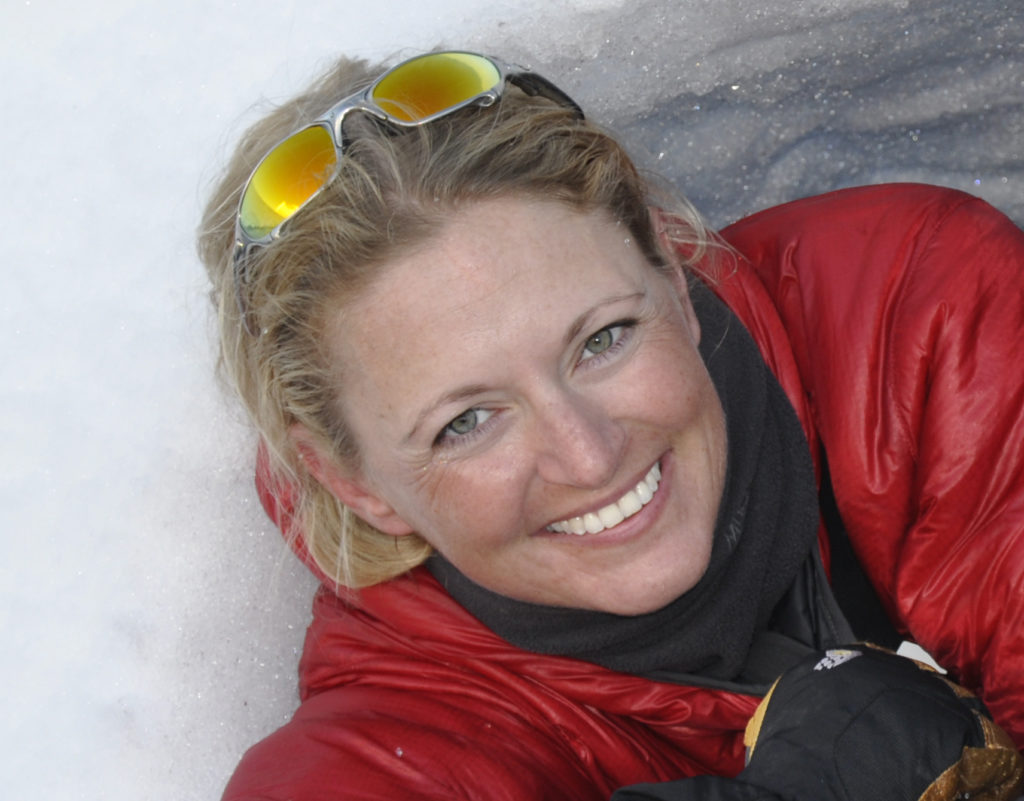
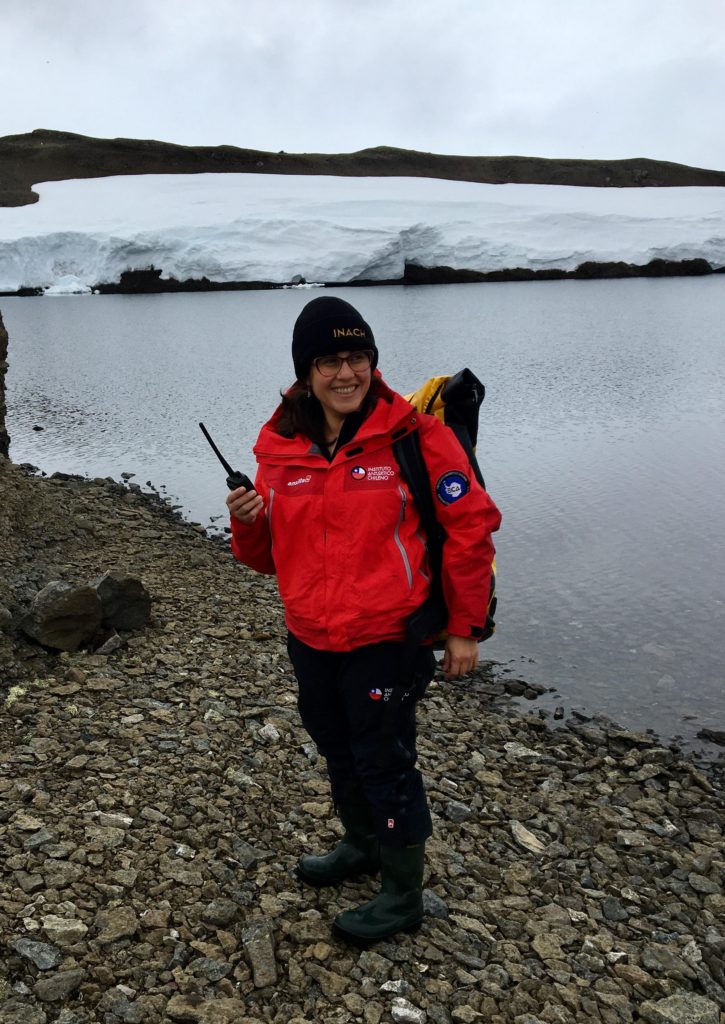
Claudia Maturana Bobadilla, PhD
Discipline: Evolutionary Biology
Age: 37
Nationality: Chile
Organisation: Institute of Ecology and Biodiversity; Millennium Institute BASE (Chile)
Regional focus: Antarctic
Social media: ResearchGate
What’s the work that you do?
I am an evolutionary biologist interested in understanding the evolutionary processes and possible mechanisms that can explain the current distribution of high latitudes organisms, in particular freshwater and marine invertebrates from Antarctic and sub-Antarctic regions. I am also interested in improving the release of biodiversity occurrence information through open and free digital platforms. I am the founder of the Chilean counterpart of the APECS initiative which helps to involve polar early career scientists in outreach, education, and public debate.
What keeps you going?
What I like about my job is that it gives me a lot of freedom of action. I can ask new questions and learn new tools. It is a very dynamic world! This ensures that my enthusiasm never ends – I’m always looking for new destinations, collaboration networks and challenges in the professional (and social) areas. At present I am interested in contributing to science in a different way, with greater social and educational impact.
What’s your message to the world?
I believe that science and knowledge make us more aware of our existence and our effects on the landscape and environment. The world around us is much more connected to our behavior than we think. Today more than ever we need to have more empathy with our environment and allow new generations to have a glimpse of nature and its biodiversity. In this sense, it is very important to be creative and dare to break old paradigms with new ideas and methods!
Rupali Pal
Discipline: Environmental science, Physics
Age: 43
Nationality: India
Organisation: Bhabha Atomic Research Centre (India)
Regional focus: Antarctic
Social media: ResearchGate
What’s the work that you do?
I work in the field of background environmental radiation through natural occurring radionuclides present in the soil, rocks, air and water. Environmental radioactivity in the Antarctic Region, especially in the Larsemann Region of East Antarctica, where the Indian station “Bharati” is situated, is unique. As per geotectonic theory, India was once a part of Antarctica which got disconnected and moved ahead to merge with Asia. The theory has been supported by dating studies by geologists. The Larsemann region with its radiation signatures, i.e., background thorium concentrations higher than uranium, is similar to the radioactivity concentrations available in Indian coastlines and can support the India- Antarctic link theory.
What keeps you going?
Finding answers to the unknown and scientific pursuits motivates me. Researching in the land of penguins has been an enriching and scientifically interesting experience. The support that my family, friends, and seniors give me is encouraging. The icy whiteness and pristine beauty of the region is a bliss.
What’s your message to the world?
Earth is subject to climatic changes because of human interference. Pollution causes global warming and ice sheet melting. It is the polar regions which have sustained the Earth’s energy balance in a holistic way for millions of years. Preserving the polar regions is the key to the future life on Earth. It is up to all of us to save our Earth.
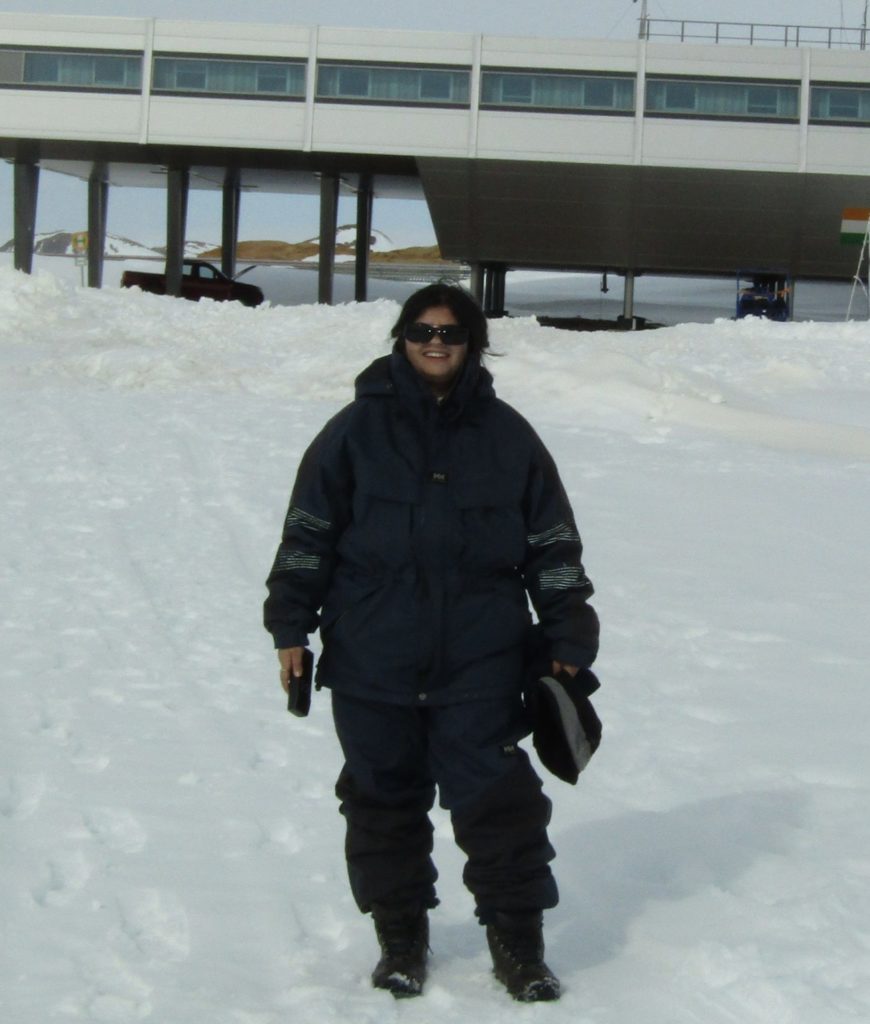
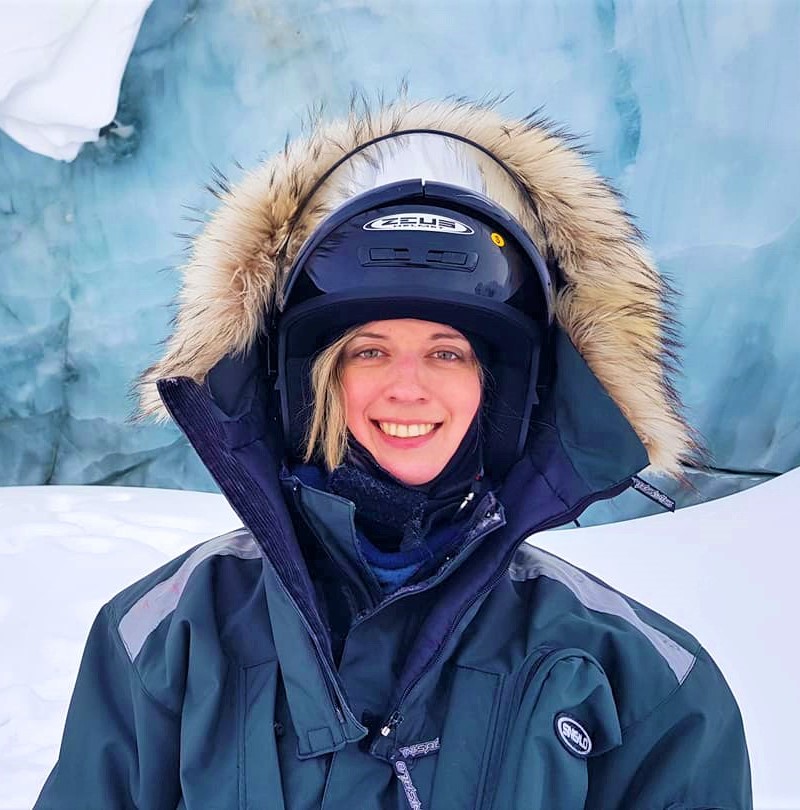
Christelle Guesnon, MSc
Discipline: Atmosphere
Age: 32
Nationality: France
Organisation: Norwegian Polarinstitutt (Norway)
Regional focus: Arctic
Social media: Instagram
What’s the work that you do?
I am an engineer responsible for the running, maintenance and installation of the technical and research equipment at Sverdrup and Zeppelin Observatory in Ny-Ålesund – Svalbard. The majority of the equipment is focused on measuring atmospheric properties via short and long term observations.
I like to do practical work, especially out in the field. I really like to be acting as a support for scientists and be able to take part in different projects. It is important for me that I get to work with so many different nationalities, it helps to get a bigger picture.
What’s your message to the world?
I really hope that we can touch – sensibilize more people about the polar regions and how fast the climate is changing. I realise that if you don’t live or go there it is quite difficult to grasp the extent of how fast things are changing. I wish to share the beauty of these regions in a hope that we can do something to preserve them.
Joanna Kafarowski, PhD, FRGS
Discipline: Geography
Nationality: Canada
Organisation: Independent scholar
Regional focus: Arctic and Antarctic
Social media: Website and Facebook
What’s the work that you do?
I research and write books about forgotten women in polar history. I left academia in order to focus full-time on this rewarding work. “The Polar Adventures of a Rich American Dame A Life of Louise Arner Boyd” is the first comprehensive biography of a female polar explorer. My latest book “Antarctic Pioneer The Trailblazing Life of Jackie Ronne” is the first biography of a female Antarctic explorer. My next book project will take a wider view of gender in polar exploration.
I’m passionate about uncovering the lives of remarkable polar women like Louise Arner Boyd (1887-1972) who organized, financed and lead seven daring expeditions by sea to Greenland, Franz Josef Land and Svalbard and Jackie Ronne (1919-2009) who was the first woman to actively participate in an Antarctic expedition, the first American woman in Antarctica and the first of two women to over-winter there. There are so many tantalizing stories of polar women- Indigenous and non-Indigenous- still left untold.
What’s your message to the world?
The polar regions have always resonated deeply with me and I believe this is “the something shared” with all polar women. If you have the opportunity to go to the Arctic or visit Antarctica, seize it! Embrace the freedom and the fierce joy that we all experience in these magical places!
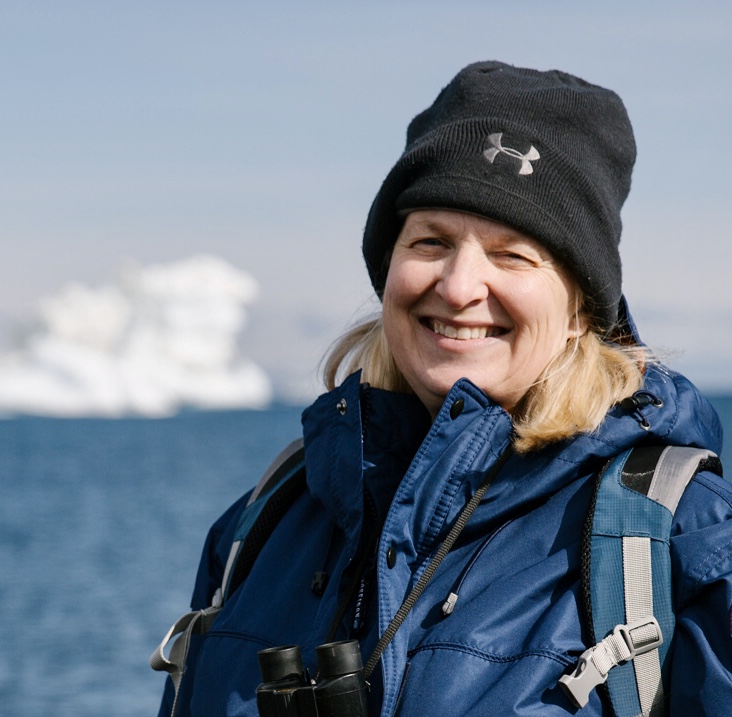
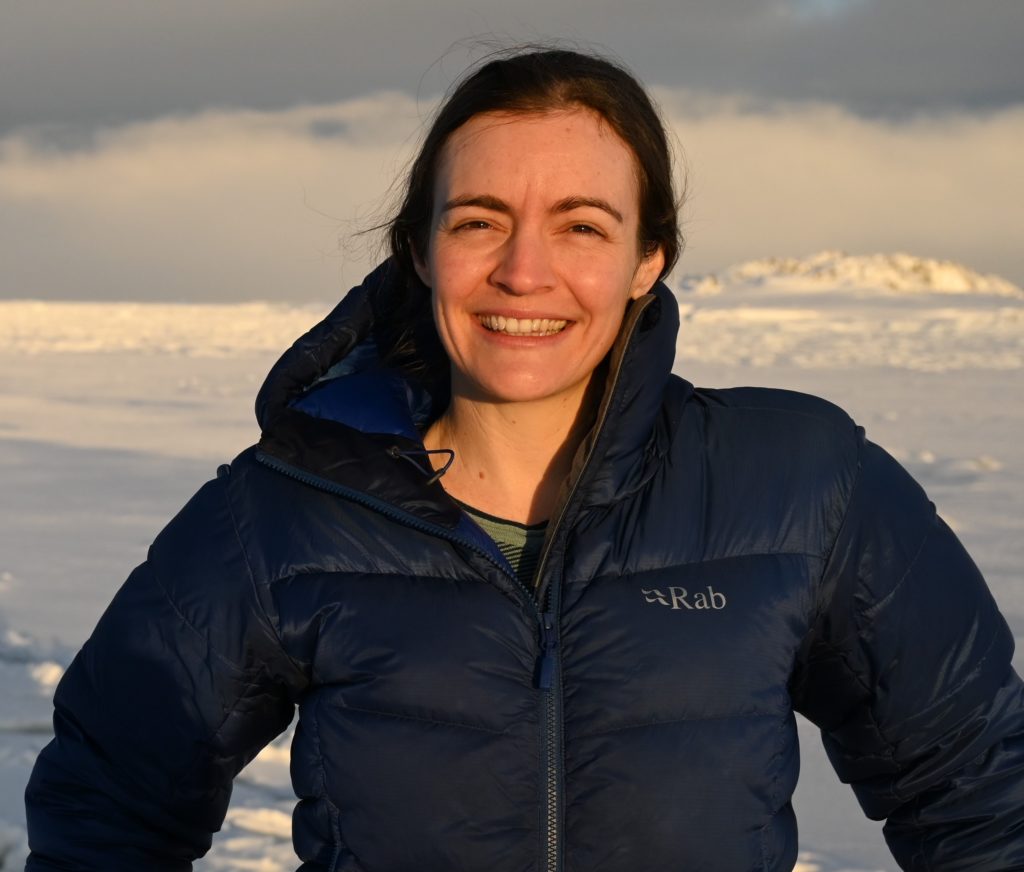
Kim Bernard, PhD
Discipline: Biological Oceanography
Age: 43
Nationality: South Africa
Organisation: Oregon State University (USA)
Regional focus: Antarctic
Social media: Twitter and Instagram
What’s the work that you do?
I am a biological oceanographer, and central to my work is the question: How does natural and anthropogenic environmental change alter zooplankton ecology and thus the structure and function of pelagic ecosystems and services? For the last 10+ years, I have been studying Antarctic krill at the Western Antarctic Peninsula, though my research has extended to include other zooplankton and different parts of the world’s oceans. My research relies primarily on data collected during long field campaigns spent at sea or remote field stations. In total, I have spent 64 weeks at sea and 29 months at Palmer Station, Antarctica.
What keeps you going?
The awe-inspiring continent of Antarctica keeps me going. Knowing that my research will contribute to its conservation is a major driving force for me. I am also passionate about mentoring students, both undergraduates and graduates (post-graduates). I especially love the opportunity to take students into the field and share the wonder and excitement of research with them. In 2019, I led an all-women, all-student research team on a winter Antarctic campaign to investigate how Antarctic krill survive and thrive in the winter. This austral winter 2022, I will lead another all-women, all-student team to follow up on those experiments!
What’s your message to the world?
To young, aspiring scientists/explorers/world-changers, don’t listen to the doubters and haters around you. If you have a passion and are driven to do something, do it! To anyone reading this, I am writing this on Earth Day and my message to the humans of Earth (and to the few orbiting up above us – though I suspect they already know this) is that our blue planet is a precious, abundant, life-giving one. We have separated ourselves from Earth and in so doing have disrupted the delicate balance of our planet. It’s time for us to reconnect with each other and Earth and to shift towards peace.
Iglika Trifonova
Discipline: Communications, Education and Outreach
Age: 46
Nationality: Bulgaria
Organisation: Bulgarian Antarctic Institute; APECS Bulgaria; Sofia University (Bulgaria)
Regional focus: Antarctic
Social media: Facebook and Facebook
What’s the work that you do?
I am excited about my work. It allows me to be with the scientists who do their research in Antarctica and transmit their results to the society. I like to show the importance of their research and the difficulties they passed to do it. I am especially passionate about doing outreach in schools, because it’s so interesting to be a polar scientist and I like when students understand it. Sometimes it changes their future and they decide to become researchers as well.
What’s your message to the world?
Dream! All our dreams can come true if we have the courage to pursue them! Fifteen years ago, I went to Antarctica for the first time as a photographer in a Bulgarian Antarctic expedition and that experience changed my life. I was so impressed by the spirit of collaboration between nations and people’s solidarity which I saw in Antarctica that I started to dream to come back there as a scientist. Finally in 2020, I started my own sociological project. I study people in Antarctica because the Icy Continent is very important for the future of humanity. I would like to extend the principles of respect and mutual support that we live in Antarctica to the entire planet. I firmly believe that this is the only way if we want to save this planet and ourselves with it.
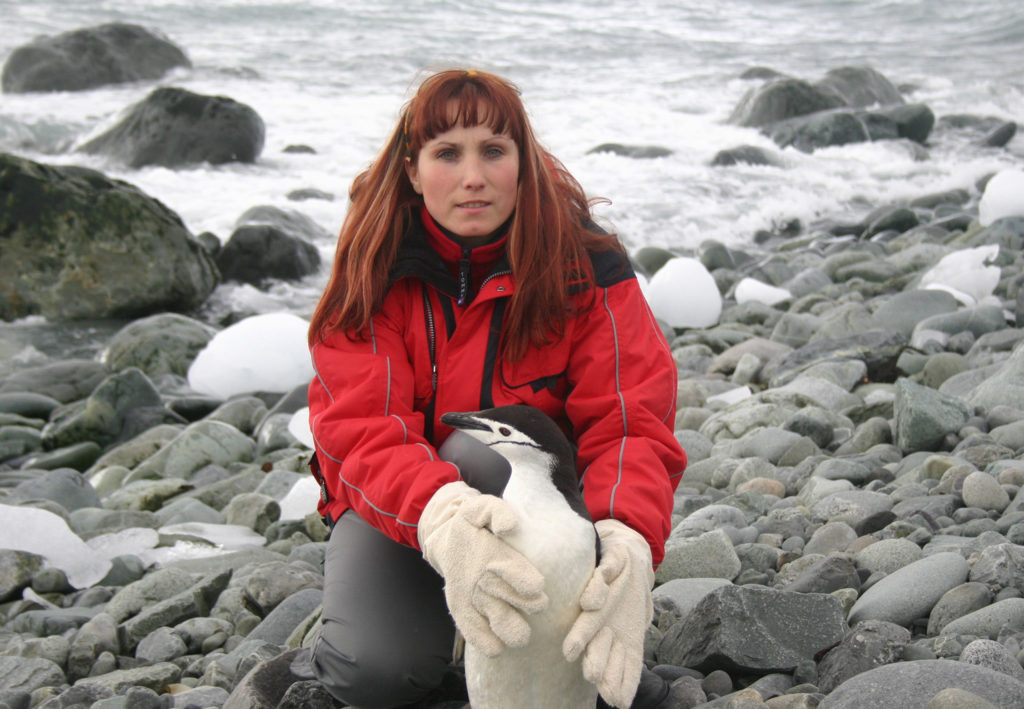
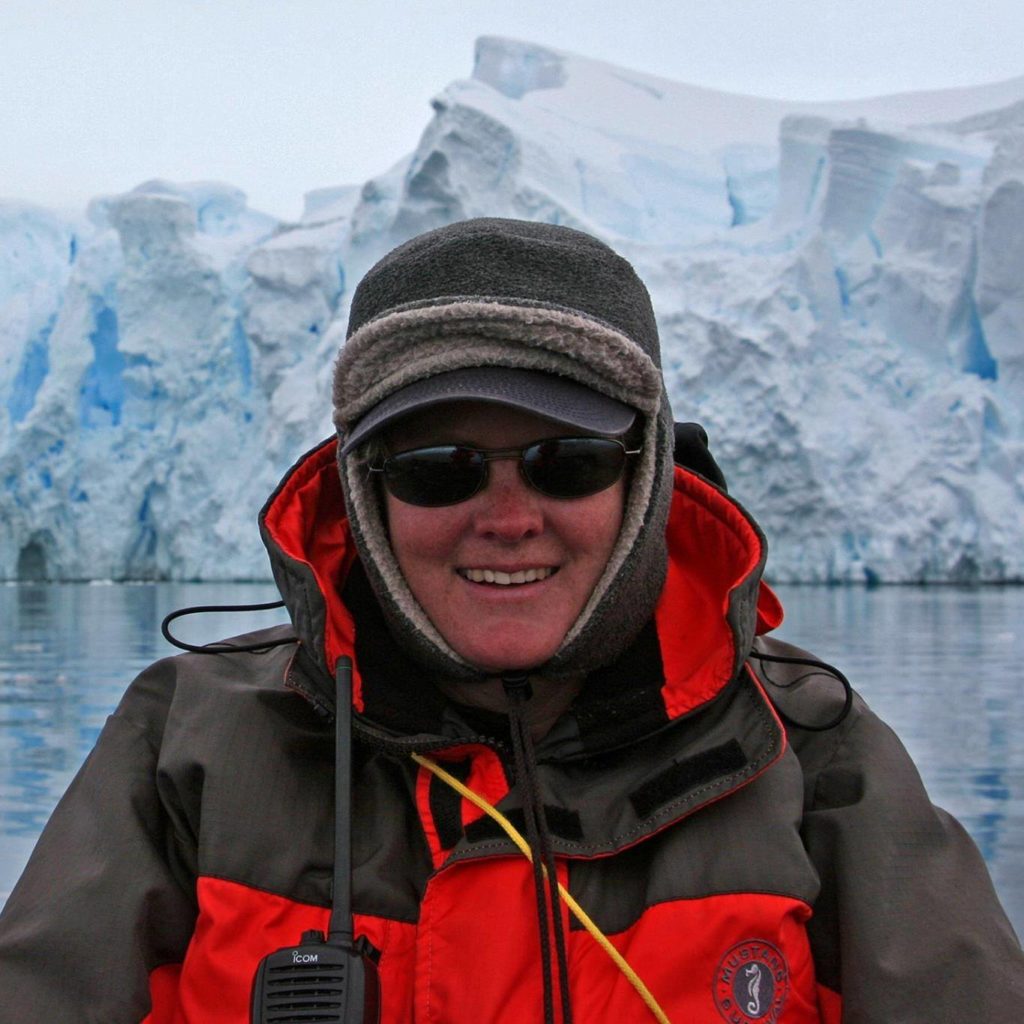
Claudia Holgate, MSc
Discipline: Polar expedition leader
Age: 50
Nationality: South Africa
Organisation: Freelance
Regional focus: Arctic and Antarctic
Social media: Website and Facebook
What’s the work that you do?
I spend 8 months of the year in the most beautiful wilderness areas on the planet. There is nothing better than being able to share my passion for the polar regions with tourists who go home with a greater understanding and appreciation for the importance of the Poles and how their actions at home affect areas far outside of their consciousness. Having people sitting on my boat with tears streaming down their face, because this is the most beautiful/spiritual/awe-inspiring experience, is why I love my job.
What’s your message to the world?
The polar regions are the “Canary in the coalmine” when it comes to climate change, and we are seeing significant changes year-on-year. We need to spread the word about how important these regions are and why they are worth protecting. In addition to creating ambassadors, we need people to understand how their simple actions at home can have devastating consequences or can be part of the solution. My message specifically to young women is that there is space to grow and make a meaningful impact in whichever field you choose, but especially, in all things polar. Take no heed of naysayers, follow your dreams and become an inspiration to those who do not have the opportunities.
Carol Devine, MSc
Discipline: Social science, art
Age: 54
Nationality: Canada
Organisation: Médecins Sans Frontières; Dahdaleh Institute for Global Health Research, York University (Canada)
Regional focus: Arctic and Antarctic
Social media: Instagram and Twitter
What’s the work that you do?
I work mainly on climate change and health for a medical humanitarian organization and am a community scholar at a global health research institute looking particularly at climate adaptation and also planetary health advocacy respectively. Also, my polar work and interest continues to be on plastic pollution, climate policy (also on black carbon) and mapping women of the Arctic and Antarctic to collect and share their little-known or untold stories. I also collaborate with Women of the Arctic and other amazing academics, do-ers and makers.
What keeps you going?
What keeps me going is people and planet – my children, family, friends, colleagues and also strangers and non-human species. We’re in an extremely serious climate crisis cascading with other crises (COVID, biodiversity loss, structural racism & sexism etc.) putting our survival in question and making already vulnerable and made-vulnerable people at more risk. My job inspires me because I get to work with and meet incredible individuals with such diverse experiences and skills around the globe daily. We have work to do, there’s hardship and joy in it too, and there’s no choice. Let’s live life to the maximum, but responsibly and knowing our interconnections, for us and future generations. I so appreciate my job, my colleagues and those also working on these topics of health, climate, community and political solutions. We need new thinking guided by our ancestors’ and also Indigenous wisdom.
What’s your message to the world?
If we have equity in the world, human rights, and we treat the planet better, there’s hope. In Antarctica, moss grows incredibly slowly and glaciers devastatingly retreat like never before. Antarctica is our bellwether, like the Arctic. I keep doing polar work because these extraordinary places regulate the world’s temperatures, we owe them to care about fellow humans and non-human species in peril. We need the ecosystem, the biosphere – it doesn’t need us. We humans have survived other massive crises by action, including for the greater good. We’re made to regenerate and adapt. Let’s do it like never before! Special shout out to the young people working on polar science, art, diplomacy and more.
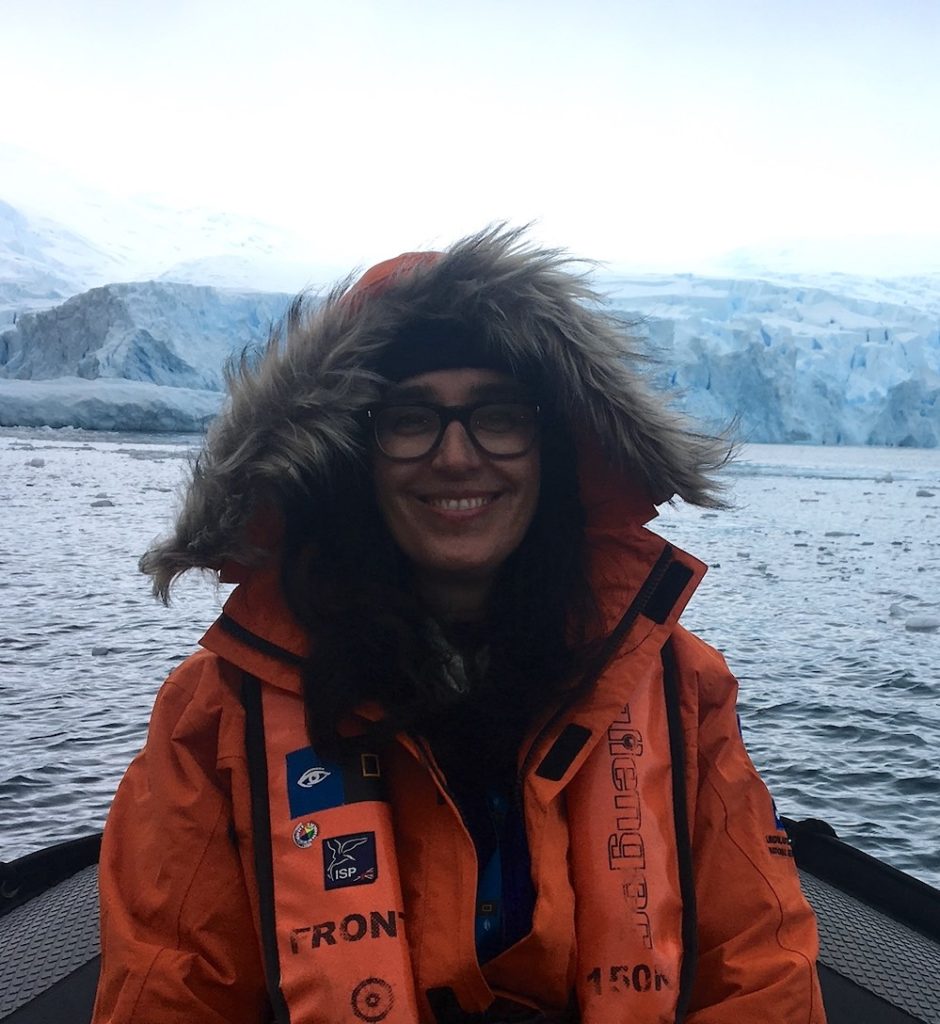

Siti Alias, PhD
Discipline: Mycology, biodiversity
Age: 56
Nationality: Malaysia
Organisation: Universiti Malaya (Malaysia)
Regional focus: Arctic and Antarctic
Social media: ResearchGate and Facebook
What’s the work that you do?
I am a mycologist. Since 2000 I have been working with soil polar fungi, their biodiversity and phylogeography, antimicrobial activity, and cold-adapted enzymes in Continental Antarctica and Maritime Antarctica (South Shetland Islands, Antarctic Peninsula). In 2007, I started to explore the biodiversity of Arctic fungi. The pole to pole study led me to explore further their differences in response and adaptation to atmospheric changes (UV and temperature).
A sense of urgency. Fungi play an important role in the marine environment. We know that their diversity and services to the ecosystem can be disrupted due to habitat changes and threats by human activities. Having access to both polar regions has inspired me to study fungal responses and adaptation to climate change and global warming at biochemistry, physiology, and molecular levels. There are still important questions to be answered in trying to understand their roles in both poles in terms of ecosystem health and as a bioindicator of climate change.
What’s your message to the world?
Fundamental research is not only important in obtaining baseline information on species diversity, describing new species, observing phenomena, or proving facts but it is also important to support science and policy as well as science and society.
Kolisa Yola Sinyanya
Discipline: Ocean Biogeochemistry
Age: 37
Nationality: South Africa
Organisation: University of Cape Town (South Africa), Ocean Womxn
Regional focus: Antarctic
Social media: Instagram and Twitter
What’s the work that you do?
I’m a Ph.D. candidate in Oceanography at the University of Cape Town. My research is part of a growing body of work that critically examines biogeochemical cycling in the ocean, particularly regions that are currently under-sampled. The research aims involve exploring phytoplankton community dynamics and microbe-nutrient interactions in the Indian Ocean, including subtropical and Southern Ocean waters.
What keeps you going?
Very few scientists in South Africa are working on this area of specialisation in ocean science and being one of the few, especially being a black woman, is a great opportunity for me. It is an opportunity to educate those who hail from similar backgrounds like mine. Over the years this became a sky-rocketing trajectory: influence and impact from my work and science communication have reached global proportions. I enjoy that I can convert my work into a language that is understood by everyone, allowing masses around the globe to understand why my science is so important, especially because Planet Earth is changing due to global warming which leads to climate change.
What’s your message to the world?
We need to individually watch our carbon footprints because our actions highly influence how fast the planet warms up. Our global ocean and its polar regions are highly affected.
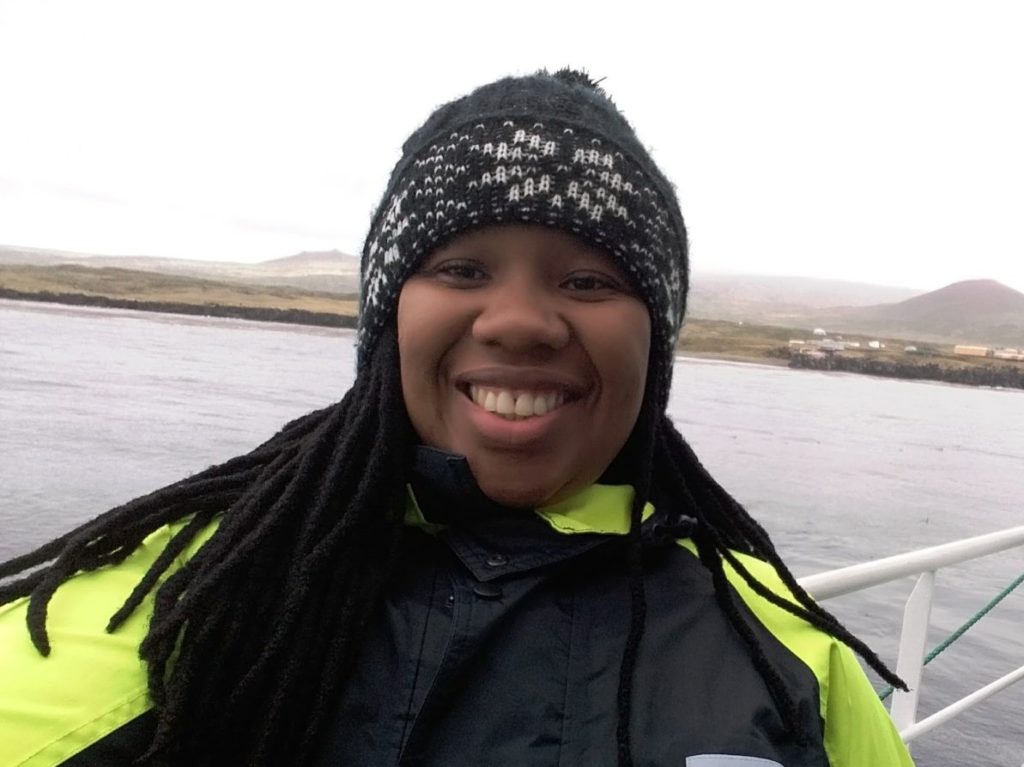
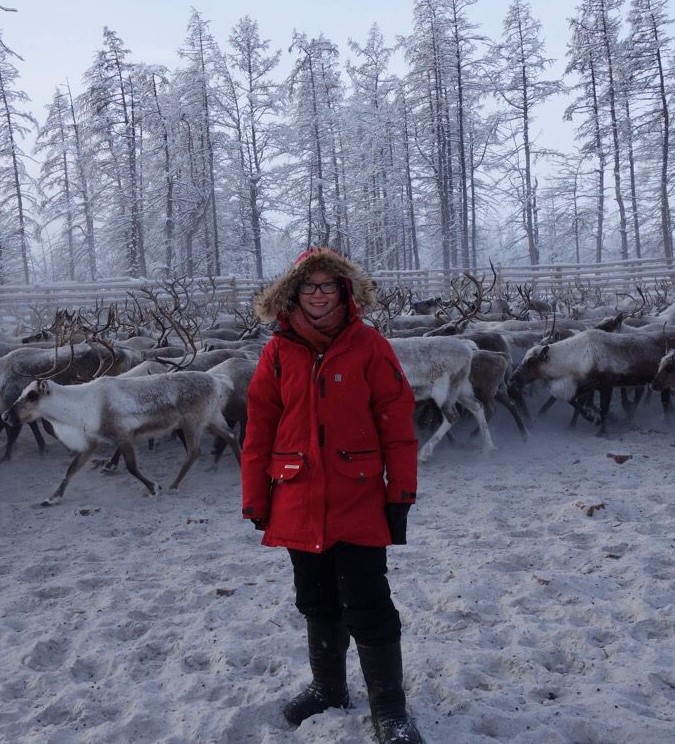
Zoia Tarasova, PhD
Discipline: Social Anthropology, Consumer Research
Age: 33
Nationality: Sakha (Yakut)
Organisation: Canvas8
Regional focus: Arctic
Social media: LinkedIn and Academia
What’s the work that you do?
I work at a behavioural insights agency, Canvas8, where I help organisations better understand people and improve their services. I’ve worked with Diageo to uncover how people socialise during after-dinner drinks and what experiences they seek in these moments. Currently, I am exploring how global newsrooms are keeping up with the calls for greater diversity and inclusion. I’m also a postdoctoral affiliate at Cambridge University where my research interests lie at the intersection of migration, religiosity and gender in Siberia.
What keeps you going?
The part of my work I love most is that it keeps me dazzled by how complex and diverse human societies are. My work consists in examining humans in their social entanglements with each other and other living entities and things. This process has limitless potential for unravelling who we are and how we function.
What’s your message to the world?
If there’s one thing that’s unique to polar societies, it’s their resilience.
Erli Schneider Costa, PhD
Discipline: Ecology (specialized in seabirds); Education and Outreach
Age: 42
Nationality: Brazilian
Organisation: Universidade Estadual do Rio Grande do Sul; Universidade Federal do Rio de Janeiro (Brazil)
Regional focus: Antarctic
Social media: Instagram and YouTube
What’s the work that you do?
I’ve been to Antarctica for research purposes 14 times since graduation. I worked on seabird ecology, especially skuas. Today I am pro-rector of extension at a Brazilian university. To remain involved with the dissemination of polar research, I created the “National Olympics on Marine and Polar Environments in Brazil” and it is in its 3rd edition.
What keeps you going?
I am passionate about science dissemination and encouraging new scientists, new teachers and actually everybody to “be what they dream of”.
What’s your message to the world?
Always remember that there are no impossible dreams. Don’t let anyone tell you what your limits are. You can be whatever you want, believe in your potential.
